|
Surviving LCVPs Main Page Surviving
Post-World War Two Wooden LCVPs
Surviving Post-World War Two
Fiberglass LCVPs Surviving
French Post-World War Two LCVPs
Replica LCVPs
Surviving
Original American World War Two LCVPs
This page updated 6-8-2024.
An American Auto
Industry in World War Two Special Edition
Below is information on nine LCVPs that, to
the best of my knowledge, are original American-built LCVPs. I
have done my best to determine this based on a lot of internet
and hard copy publication research, along with visiting as many LCVPs in the
United States as possible. There are still several more that I wish to
visit in the near future. This is also an endeavor of "not knowing
what I don't know." Hopefully, there are more World War Two
era LCVPs still in hiding and waiting to be discovered just like LCVP
C-31987 that was recovered from Lake Shasta, CA in 2021.
Owner: Private Owner
Location: California (Until summer of 2023)
Hull Number: C-31987
Year Built: 1942 or 1943
Date of Photos: 2021
Comments: How cool is this? After sinking in Lake
Shasta, CA many years ago, LCVP C-31987 was recovered when the lake
level dropped due to the extended drought in California. As the
lake level fell, the LCVP revealed itself to the public. When
James Dunsdon heard of the unidentified boat at Lake Shasta, he visited
the site and identified it as a World War Two era LCVP. It then
took several months to gain permission from the U.S. Forestry Service to
recover the craft. By that time, the water level was rising and
the LCVP was no longer high and dry on the shore. Mr. Dunsdon was
then able to obtain the services of a salvage company and raise the LCVP
from the lake.
Due to the efforts of the James Dunsdon in
recovering C-31987 from the depths of Lake Shasta, there is now a ninth
known World War Two LCVP that has been saved. This is also the
oldest surviving LCVP. Even more exciting is the fact that Mr.
Dunsdon has researched this craft and found that it is an actual World
War Two combat veteran. The numbers 31-17 on the ramp belong to an
LCVP that was swamped when the ramp came down in deep water in the
invasion of the Island of Tarawa in the Central Pacific. World War
Two historians are very familiar with the problems the U.S. Marines
encountered when they tried to cross the lagoon after encountering the
reef that protected the beach. C-31987 was one of the many LCVPs
that had to drop its ramps in deep water to let the Marines out for
their long and deadly walk across the lagoon. After the battle,
C-31987 was recovered and returned to service with the U.S. Navy.
Mr. Dunsdon is currently working with a museum
that will restore and then display this rare and important piece of
American World War Two history.
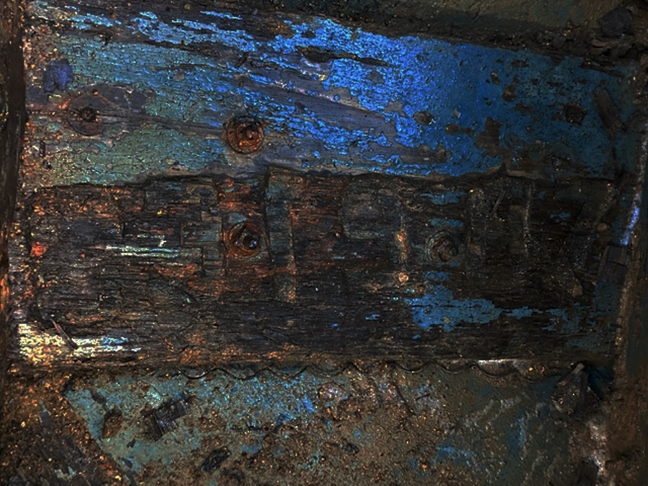
"C-31987" was carved into the framework of
the LCVP, giving a permanent record of its U.S. Navy hull number.
This is the oldest known World War Two LCVP. While the extended
drought has had detrimental effects on the California's economy and
produced a substantial number of wildfires, on the plus side, it has
revealed this historic artifact. James Dunsdon needs to be
commended for his perseverance and the expense of recovering LCVP
C-31987. Photo courtesy of James Dunsdon.
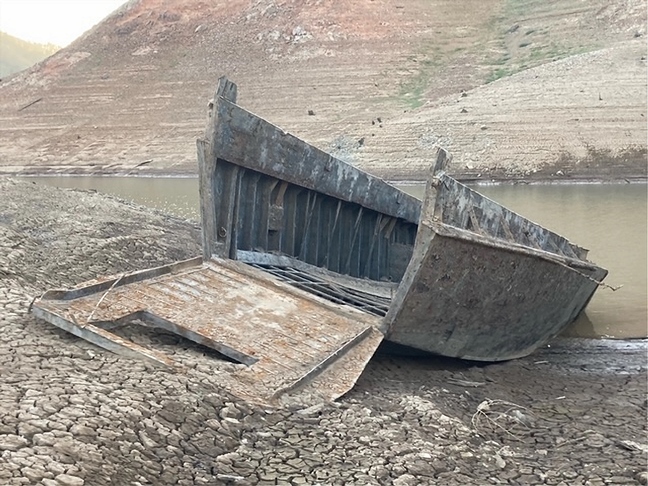
The next three photos show LCVP C-31987
sitting on the shore of Lake Shasta after the water level had receded
due to drought. One of the key identifiers for a World War Two
LCVP is the ramp cable retraction sheaves being located to the outside
of the boat. Photo courtesy of James Dunsdon.
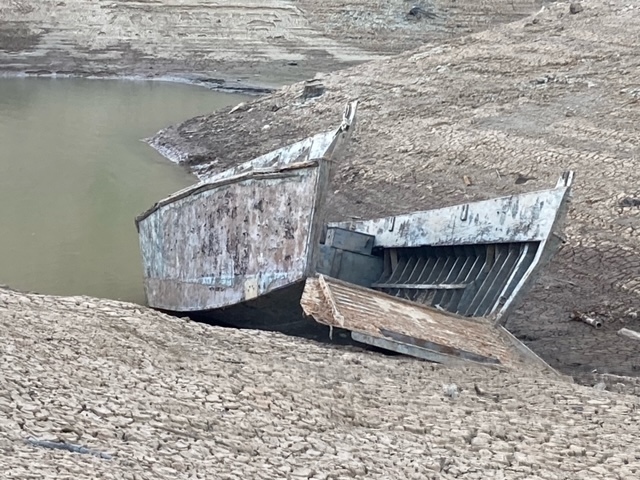
Photo courtesy of James Dunsdon.
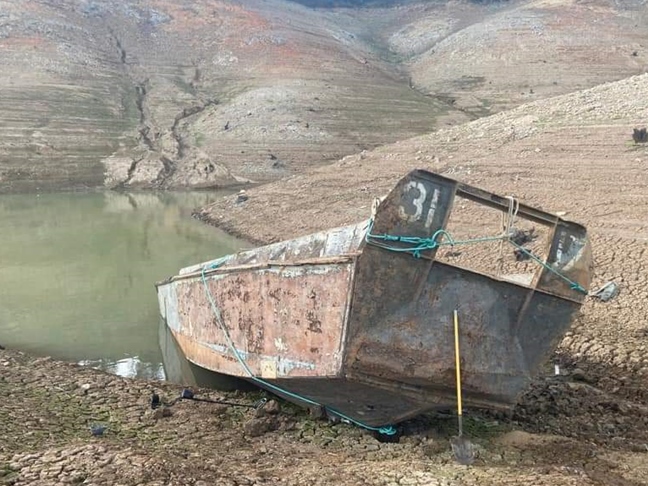
The ramp has been raised, revealing the
numbers 31-17 on the boat. Photo courtesy of James Dunsdon.
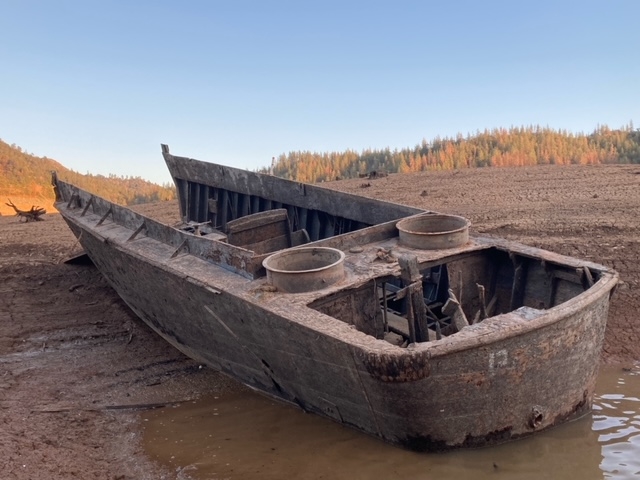
The twin machine gun tubs were only
installed on World War Two LCVPs. This is another prime indication
that this is a World War Two craft and not one built in the 1950s.
There would be no reason for the civilian owner of the LCVP to add the
tubs. Also, the LCVP has a rounded transom which was only built by
Higgins Industries. The other manufacturers of World War Two LCVPs
used squared off transoms. Photo courtesy of James Dunsdon.
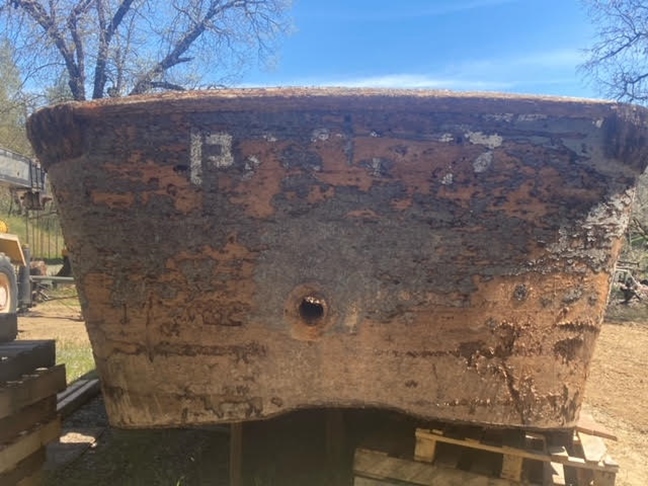
Photo courtesy of James Dunsdon.
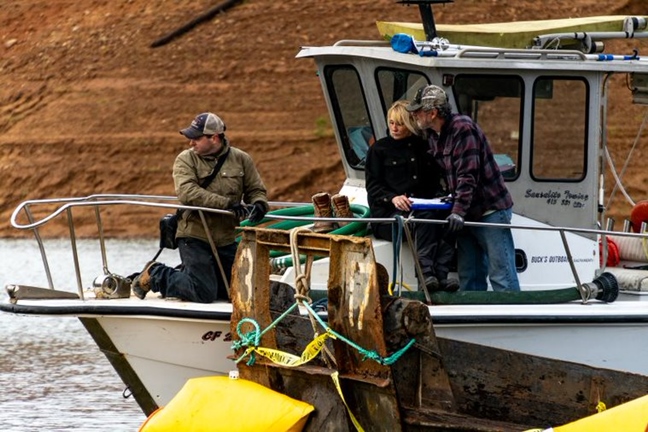
Photo courtesy of James Dunsdon.
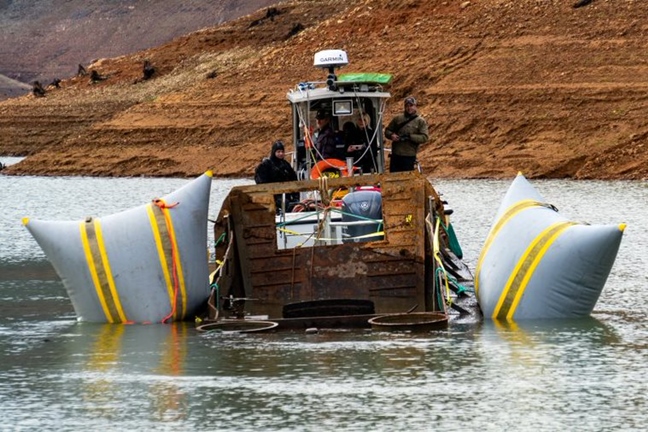
Photo courtesy of James Dunsdon.
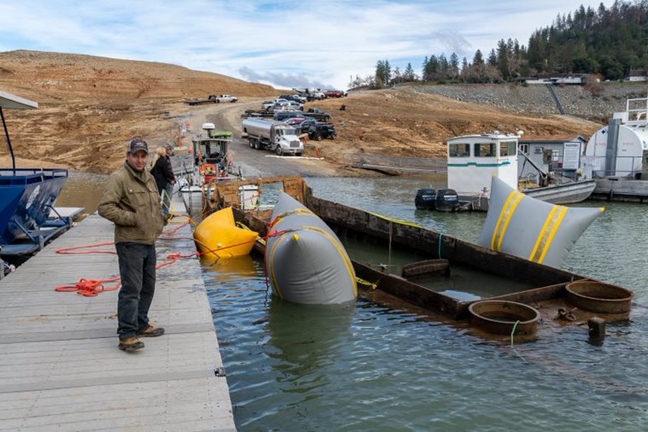
Photo courtesy of James Dunsdon.
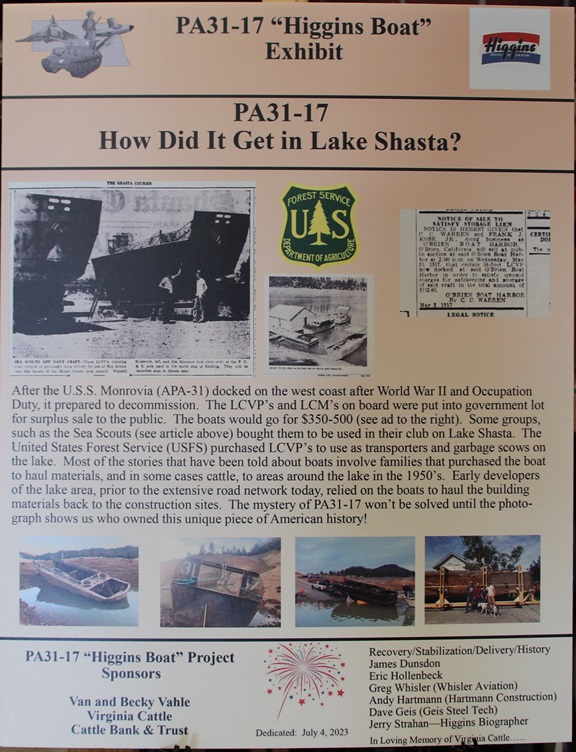
This information placard is part of the
display of LCVP C-31987 at the Nebraska National Guard Museum in Seward,
NE. C-31987 was moved to the museum from California during the
summer of 2023. Author's photo added March 8, 2024.
Owner: Nebraska National Guard Museum
Location: Seward, NE (Starting July 2023)
Hull Number: C-31987
Year Built: 1942 or 1943
Date of Photos: August
8, 2023
Comments: C-31987 is now owned by the Nebraska National Guard
Museum and is on display in the museum's lower level. Why did it
end up in Nebraska? The reason is that Andrew Jackson Higgins,
whose company developed and built many of the World War Two LCVPs, was
from Nebraska. Mr. James Dunsdon
donated LCVP C-31987 to the
Nebraska National Guard Museum for this reason.
Below are the photos I took on August 8,
2023 during my visit to this excellent and unique military history
museum. The LCVP is mounted in a stabilization frame to preserve
its structural integrity.
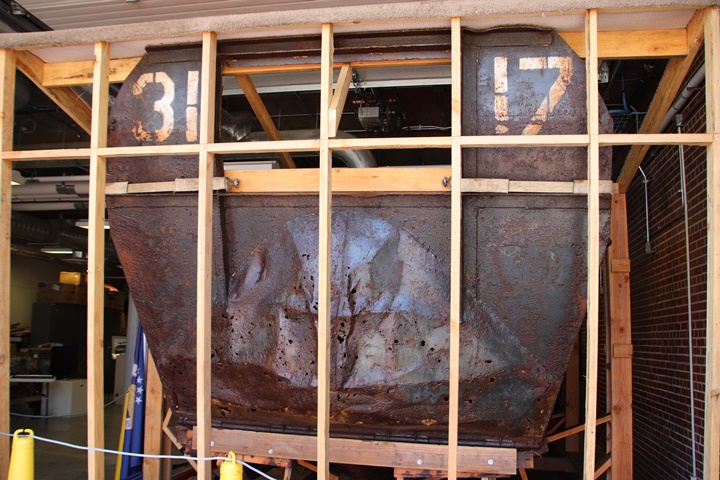
Author's photo added March 8, 2024.
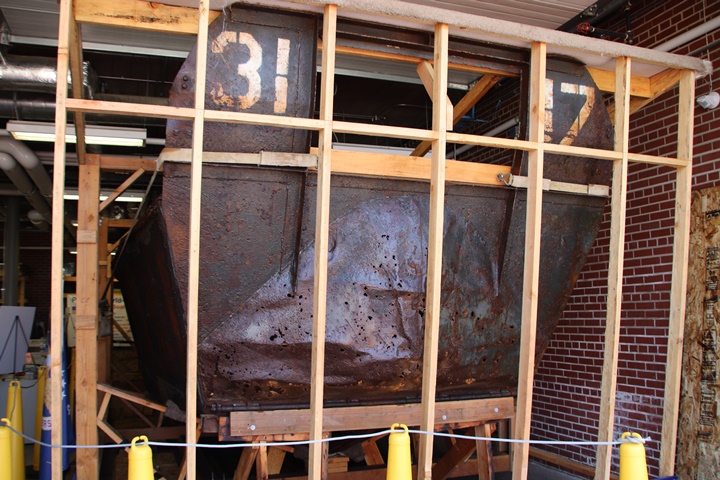
Author's photo added March 8, 2024.
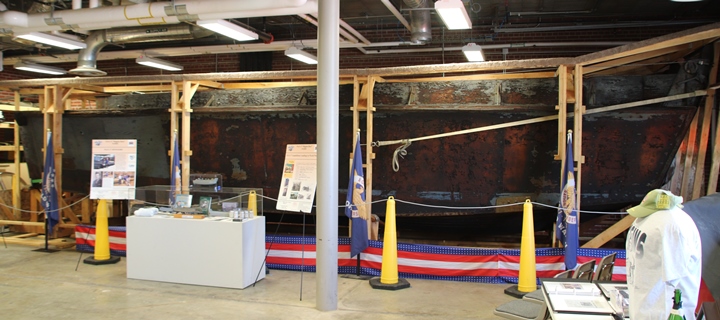
Author's photo added March 8, 2024.
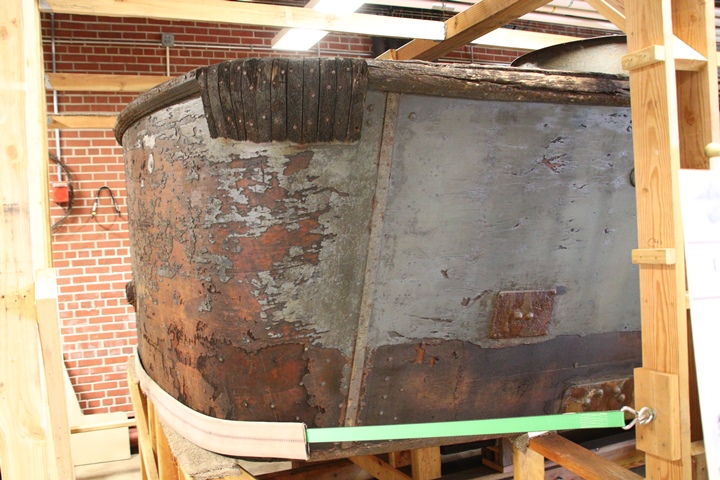
Author's photo added March 8, 2024.
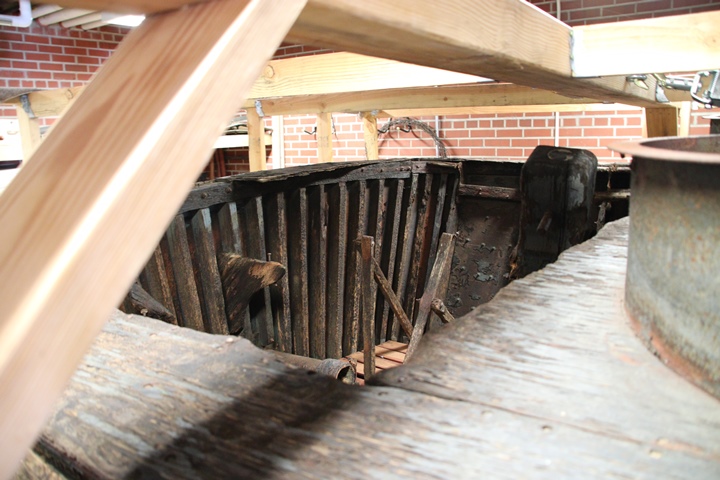
Author's photo added March 8, 2024.
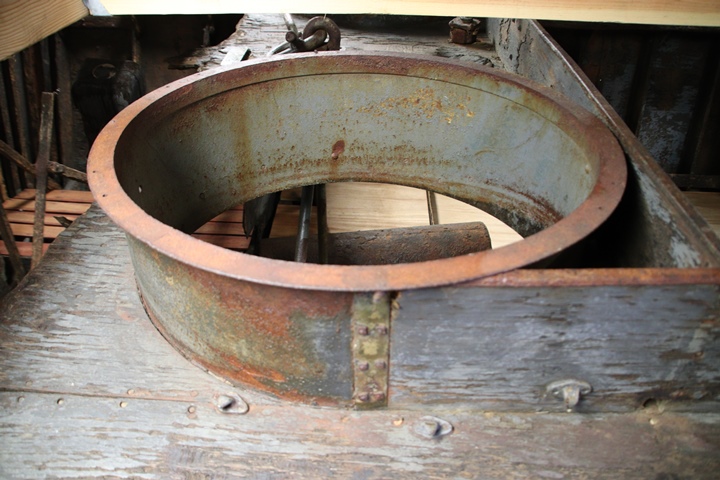
Author's photo added March 8, 2024.
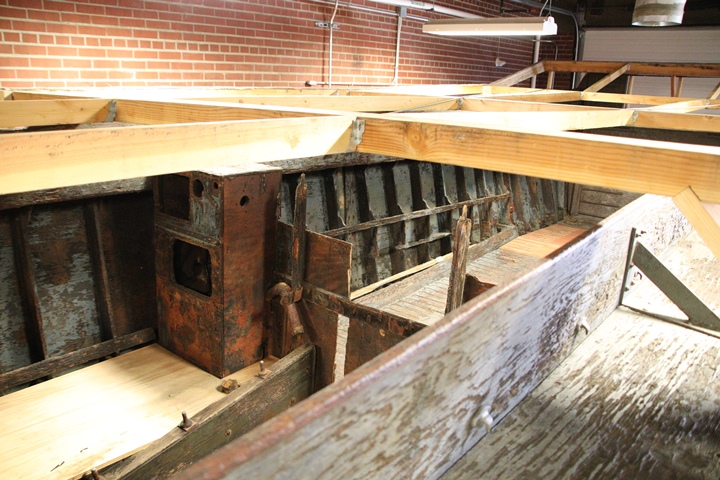
Author's photo added March 8, 2024.
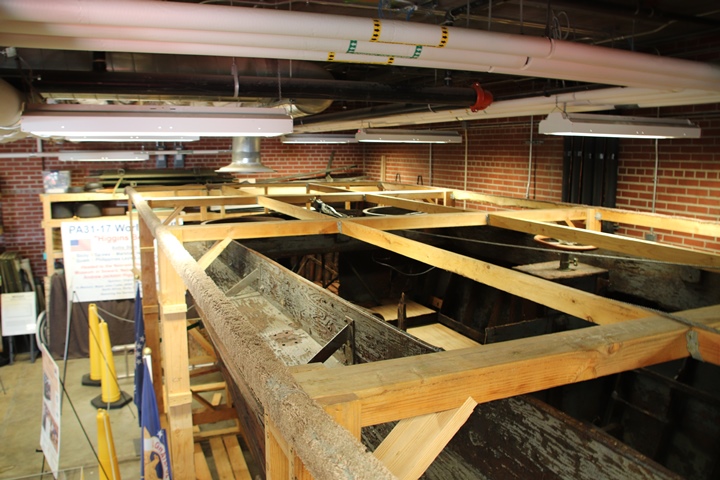
Author's photo added March 8, 2024.
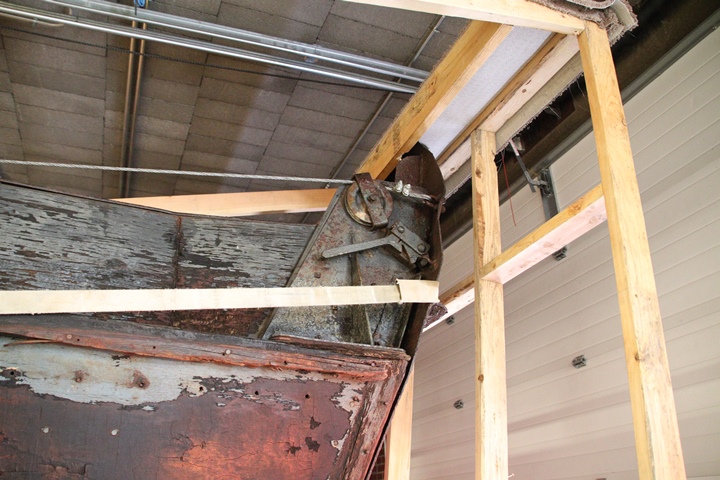
Author's photo added March 8, 2024.
Owner: United States Army
Location: National Museum of the United States Army, Fort Belvoir, VA
Hull Number: Unknown
Year Built: 1942-1945
Date of Photos: June 29,
2021
Comments: Overlord Research, LLC, Charleston, WV found this
LCVP on the
Isle of Wight, off the coast of England. It was identified to be of World War Two
vintage. Restoration was done by Hughes Marine Service.
I was finally able to visit the National
Museum of the U.S. Army on June 29, 2021. The first display I
visited was the museum's diorama of soldiers coming down a rope ladder
as they loaded into LCVP PA13-14. I was able to verify this as a
World War Two era LCVP that appears to have been built by Higgins
Industries with a Hall-Scott/Hudson Invader engine.
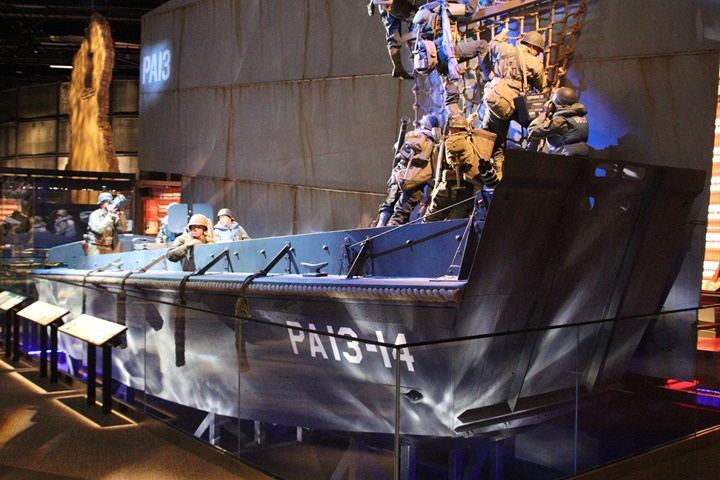
The LCVP is one of only three pieces of
large hardware on display in the World War Two section of the museum.
The others are a M4A3(75)E2 Jumbo Sherman tank and a 40mm Bofors
anti-aircraft gun. Author's photo added 7-3-2021.
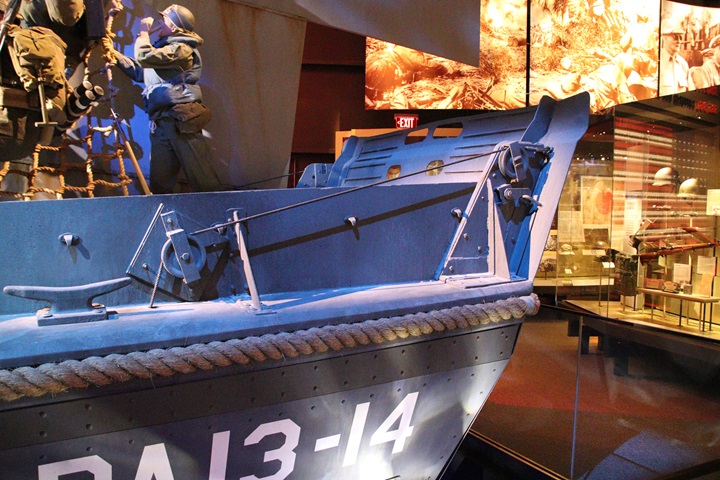
The routing of the ramp cable through the
inside of the boat and then outside through the two sheaves indicates
this is of World War Two vintage. Author's photo added 7-3-2021.
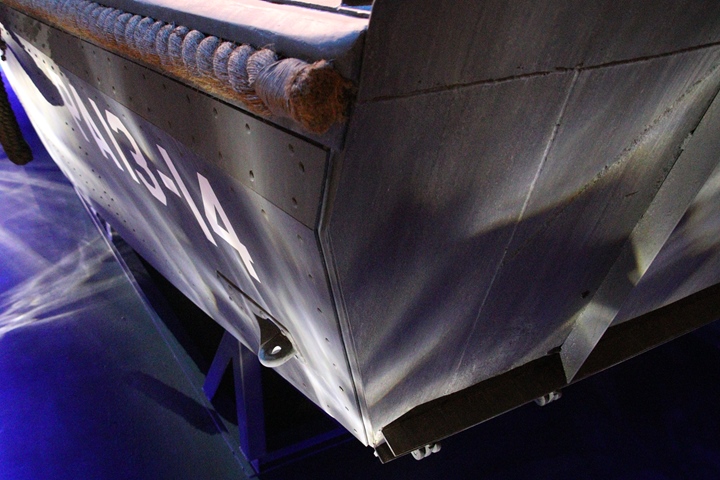
The slight kink in the side of the boat was
a surprise. With the exception of the replica of a Higgins boat on
display at the National World War Two Museum in New Orleans, all of the
World War Two LCVPs I have looked at have straight sides with no kinks.
This boat also has the rounded transom that was only built by Higgins.
The Higgins LCVP Hull Number C-70032 shown next on this page has a
rounded transom but a flat side. It would appear that this LCVP was an
early model with the kinked side which required more armor plates than
later models. Apparently, there was an engineering change to take
the kink out. This made construction easier and allowed for flat pieces
of armor to be attached. Author's photo added 7-3-2021.
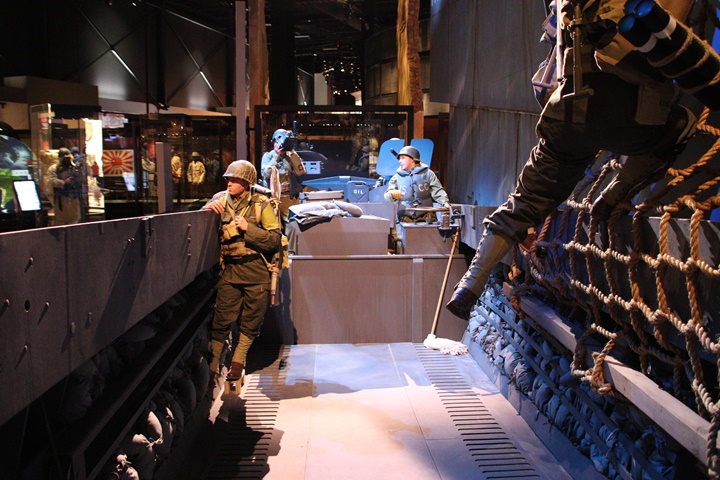
This photo was taken through one of the two
viewing holes in the ramp. The museum did a great job by
installing life jackets along the inside bulkheads. This is the
first time I have seen this detail on an LCVP. This is an
excellent historical recreation. Author's photo added 7-3-2021.
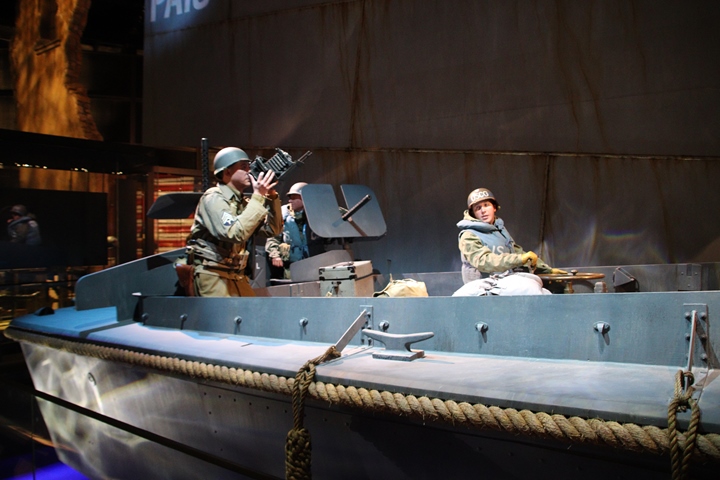
All of the faces of the mannequins in the
National Museum of the U.S. Army were cast from soldiers currently on
active duty. The only issue with using active duty soldiers is
that they may be too old. The soldiers and coastguardsmen that
manned the landing craft were 18-20 years old. Author's photo
added 7-3-2021.
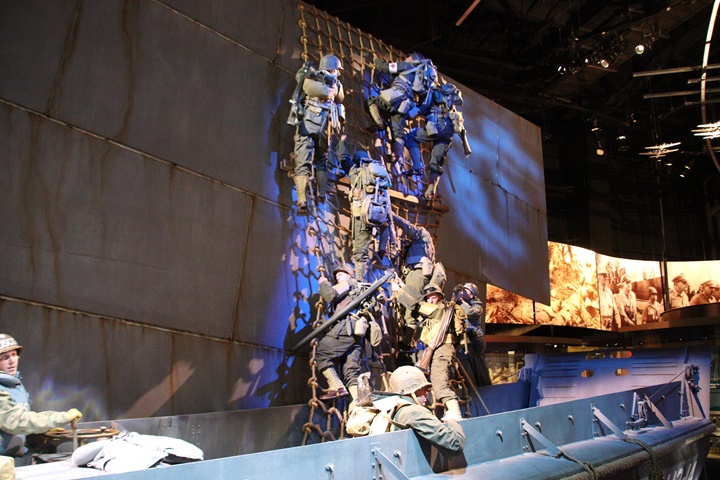
Author's photo added 7-3-2021.
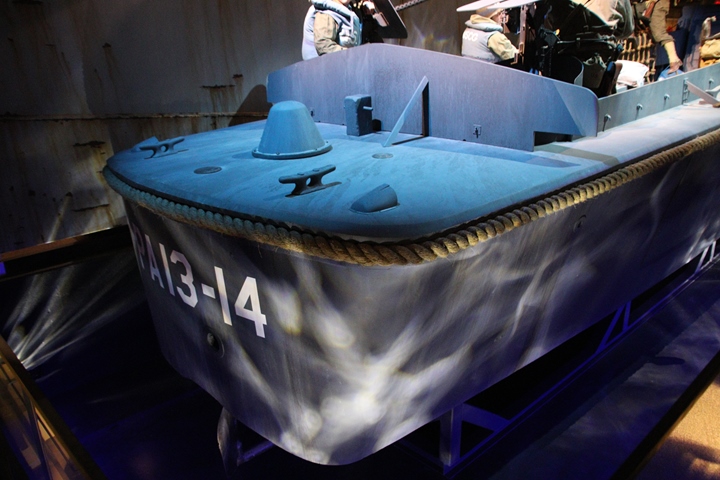
This and the following photo show the
exhaust as being on the starboard side of the boat. This indicates
that this was not powered by a Gray/Detroit Diesel 6-71 diesel engine
which was the preferred engine of the U.S. Navy. The 6-71 had the
exhaust on the port side of the boat. This photo and the one below
also show the rounded transom which was only manufactured by Higgins
Industries. Author's photo added 7-3-2021.
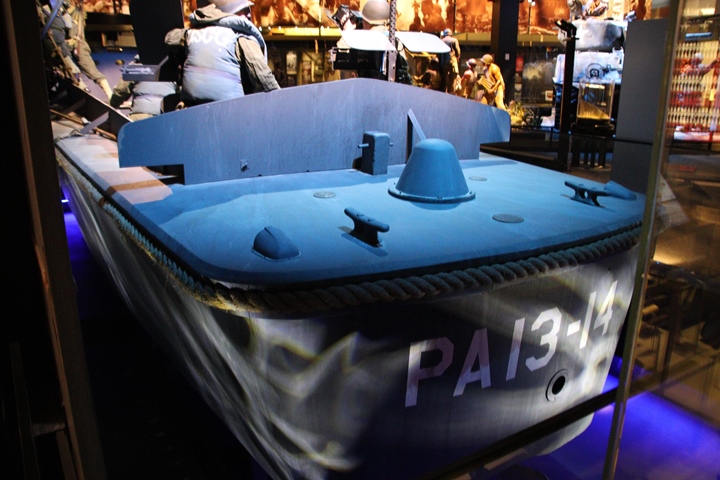
This picture gives a better view of the
exhaust port on the starboard side of the engine. The Hall-Scott
Invader engine was one of the engines that was utilized
in the LCVP with the exhaust on the starboard side of the boat. Hall-Scott built 1,693 Invader engines
in 1942. The Hudson Motor Car Company then built 4,000 Invader
engines under license from December 1942 through September 1944.
Author's photo added 7-3-2021.
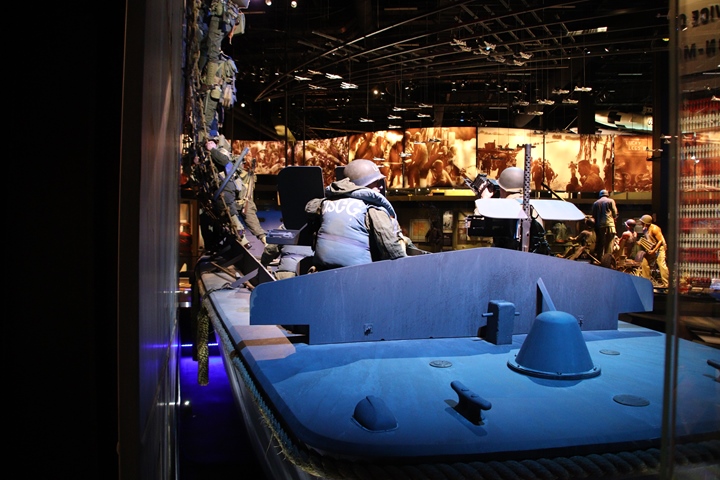
Author's photo added 7-3-2021.
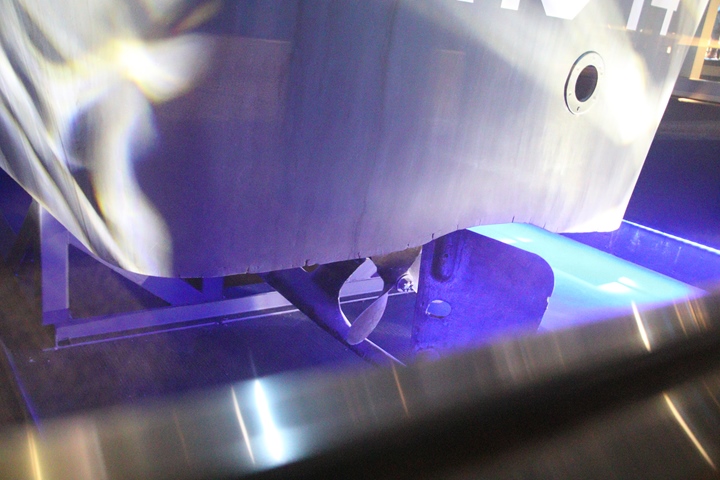
This took some experimentation and many
attempts before I finally was able to photograph the propeller, skeg,
and rudder mounting casting. This shows the World War Two type
casting.
Owner: Several private owners
Location: Ohio
Hull Number: C-70032
Year Built: 1944
Date of Photos: 2017, 2019,
and 2021
Comments: I first saw this World War Two era LCVP when it was
displayed at the 2017 National MVPA Convention in Cleveland, OH.
The owners had found this LCVP in a barn in Illinois. It had been
stored there for many years, after the original owner purchased it in
1947. So, it is as original as one can find. I again saw
this at the Conneaut, OH D-Day Re-Enactment in 2019.
2017 National MVPA Convention in Cleveland,
OH Photos:
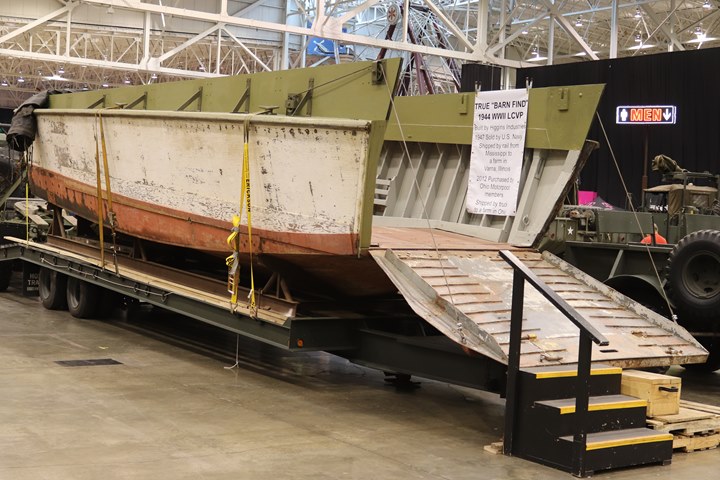
This is a real 1944 Higgins Industries-built LCVP, no doubt
looking very much like it did in 1947 when it was shipped
from Mississippi to a farmer in Illinois. There is no need for
immediate restoration, as it was in a barn for 65 years. Author's
photo.
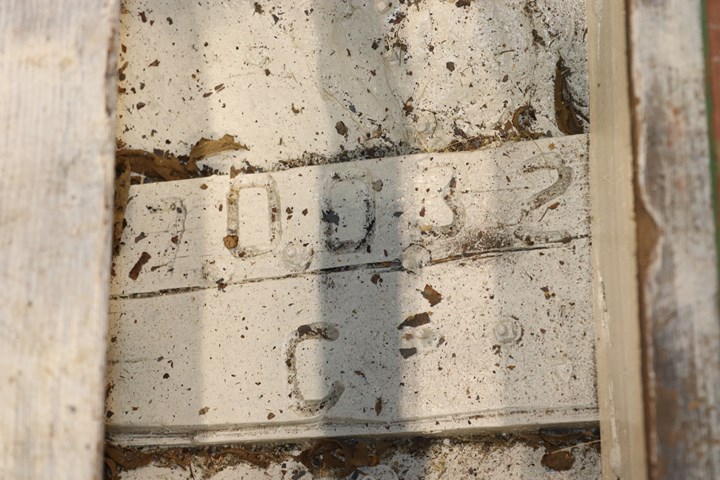
Higgins Serial Number 70032. Author's
photo.
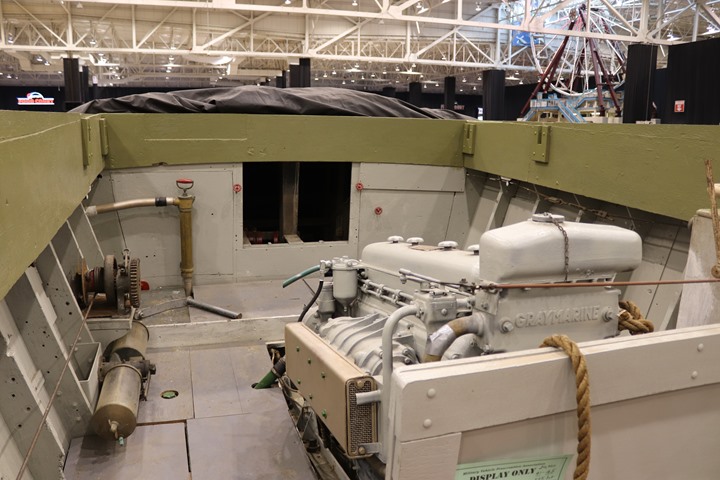
The Gray Marine name can be seen on the heat
exchanger in front of the Detroit Diesel 6-71 engine. The winch
can be seen along the starboard hull. The cable can be seen
running towards the front of the boat, as was the practice during World
War Two. A hand sump pump is on the rear bulkhead. Author's
photo.
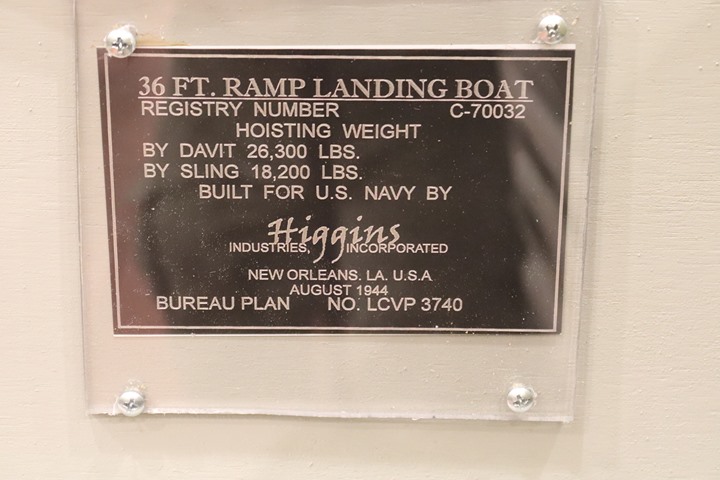
Author's photo.
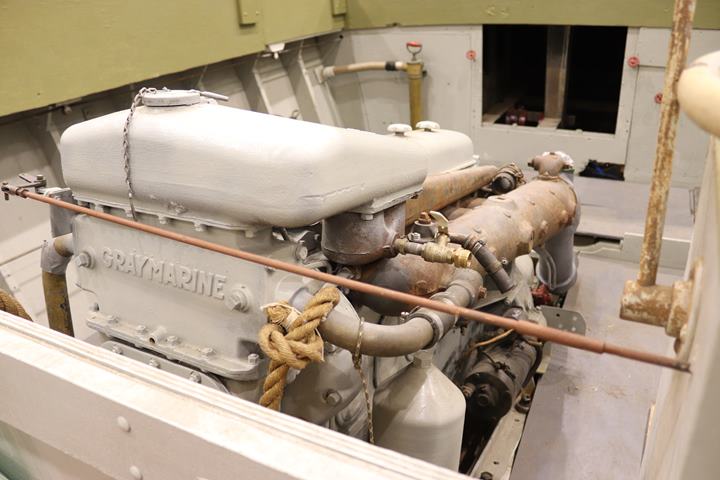
Author's photo.
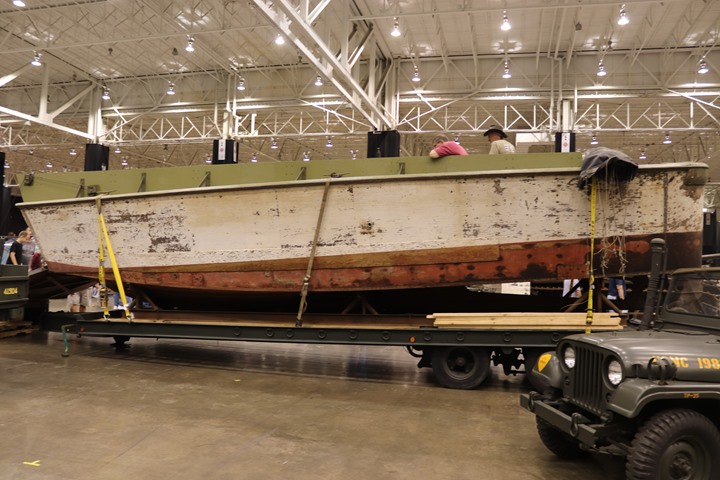
There is no armor plate on this LCVP.
The original owner may have removed it to lighten up the boat. Author's photo.
D-Day Re-Enactment at Conneaut, OH 2109
Photos:
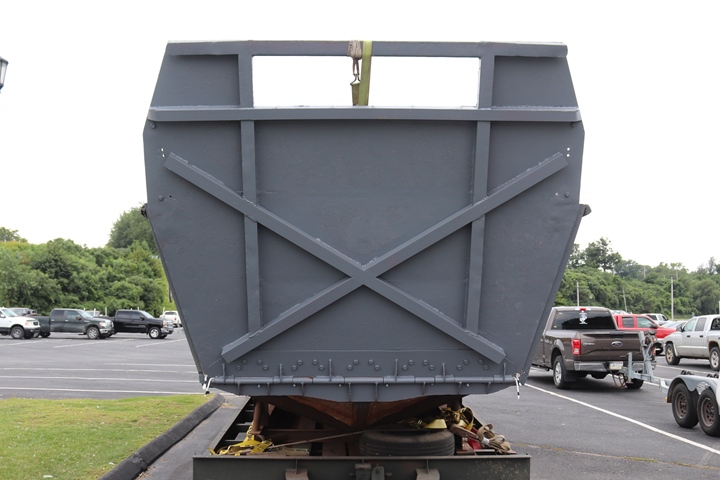
The LCVP was staged in the marina parking
lot during the event. The exterior had been painted in World War
Two gray. Author's photo.
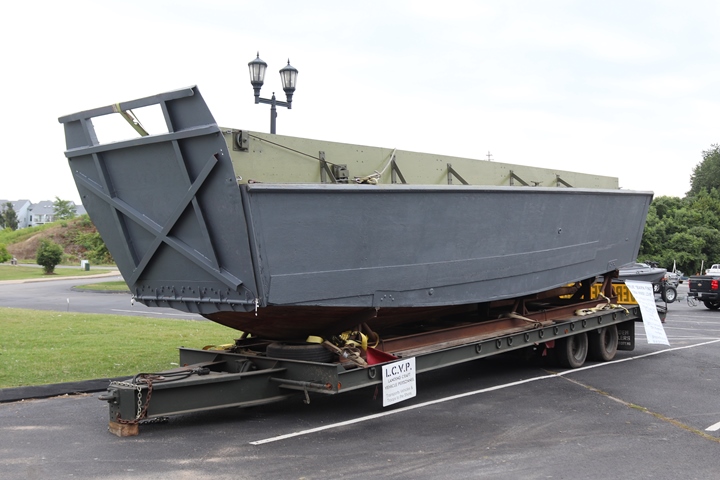
Author's photo.
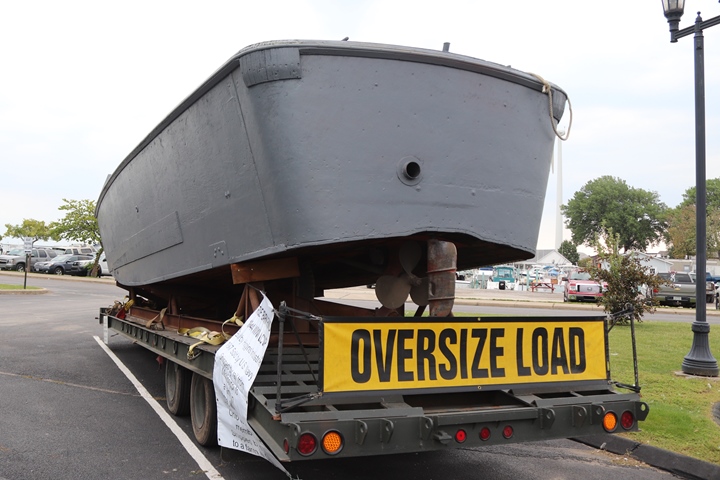
Higgins was the only LCVP manufacturer to
use the rounded transom. However, only a small percentage of the
LCVPs it built had this feature. Author's photo.
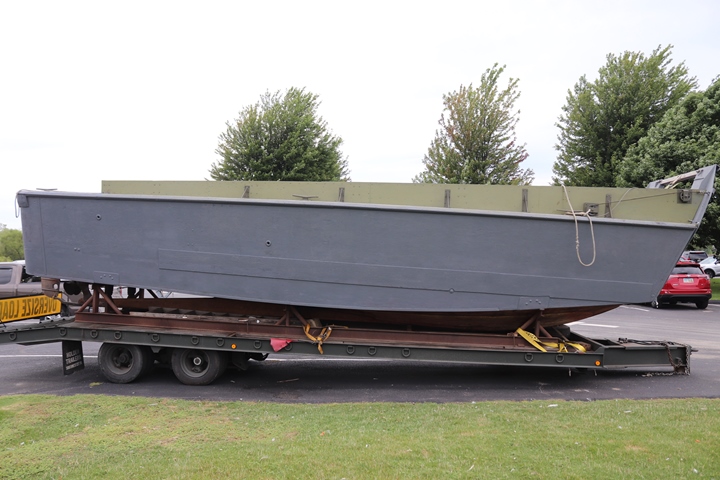
The boat looks really good with a fresh coat
of paint. Author's photo.
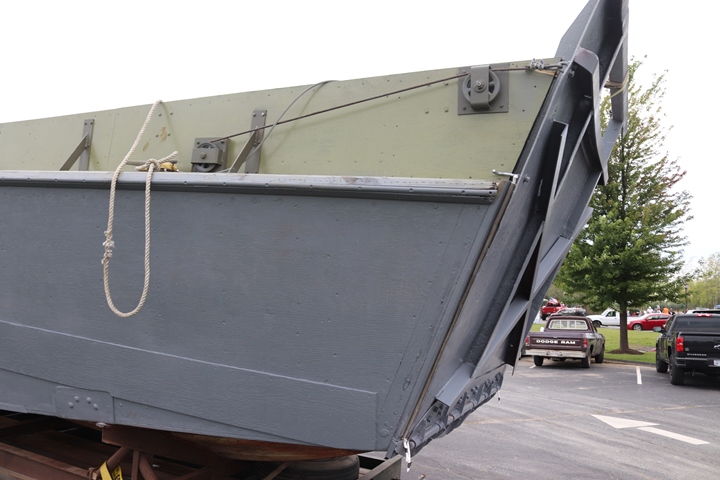
Author's photo.
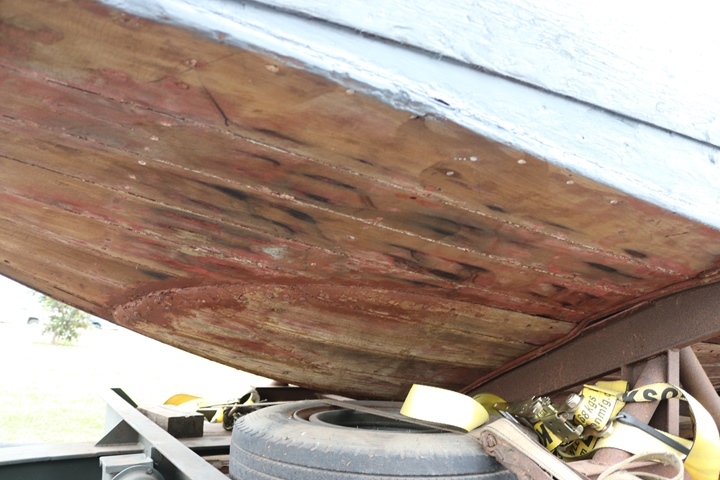
Author's photo.
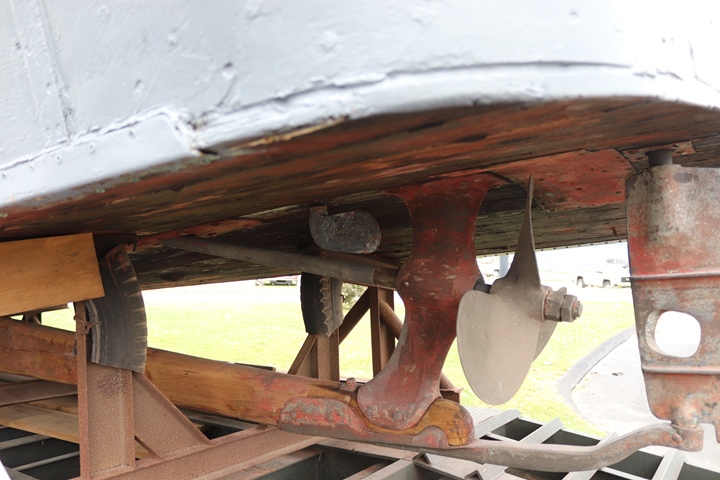
There were two different types of propeller,
skeg, and rudder mounting hardware used on the World War Two LCVPs.
This is a two-piece. One casting mounts to the hull, propeller, and skeg. The second piece connects the skeg to the rudder. The
LCVP pictured below at Roberts Armory has a one-piece mounting casting.
Author's photo.
Miami Valley Veterans Museum, Troy,
OH 2021
Photos: In July 2021, this LCVP was placed on a two year
temporary display at this museum. I visited the museum in December
2021.
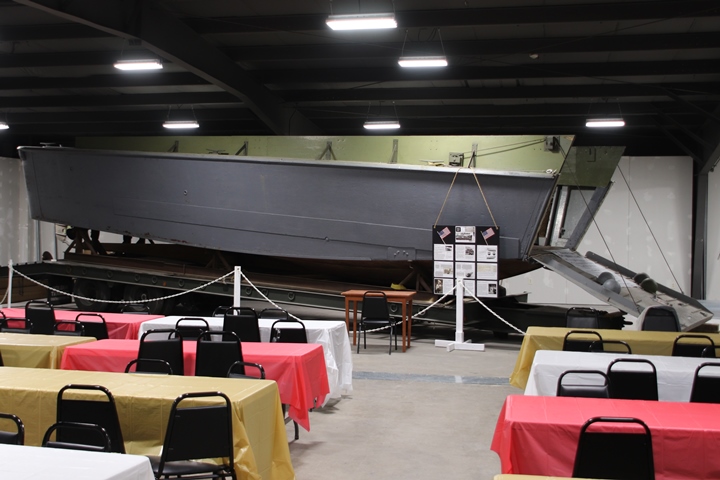
The Miami Valley Veterans Museum moved to a
new location in 2021. The facility is considerably larger than its
previous location and allows for the display of military vehicles like
the LCVP. Author's photo added 12-24-2021.
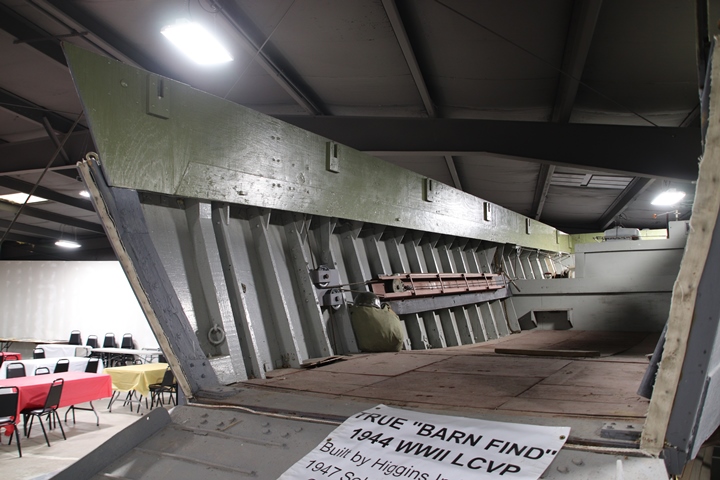
Previously, I had not taken photos of the
ramp cable system in this LCVP. Author's photo added 12-24-2021.
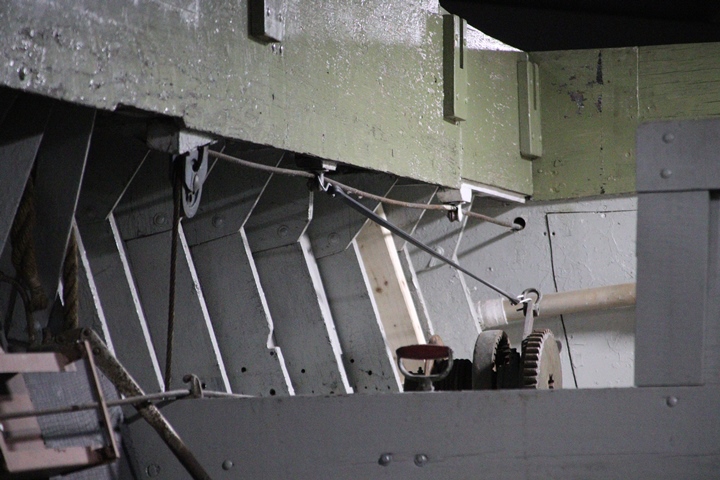
World War Two era LCVPs were built with the
winch located near the deck. Author's photo added 12-24-2021.
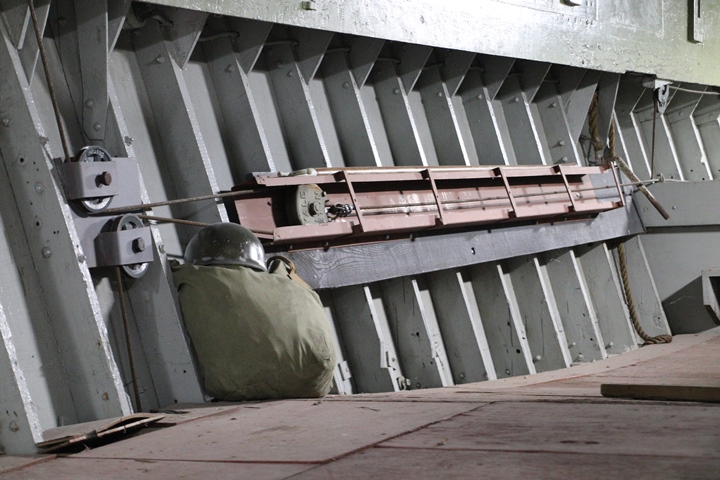
This photo shows how the original World War Two LCVPs routed the ramp cables in the troop compartment. The winch
cable is routed into the red metal track where it attaches to a pulley.
A second cable is routed around the pulley and then connects to the
ramp. The ramp cable going to the starboard side of the boat is
routed 90 degrees upwards through a sheave while the cable going to the
port side of the boat turns 90 degrees downwards and is routed underneath the
deck. Author's photo added 12-24-2021.
Normally, there was a wooden covering over
the cable and pulley mechanism to prevent the soldiers or their
equipment from fouling the mechanism. See the photos of the next
LCVP that has the wooden covering.
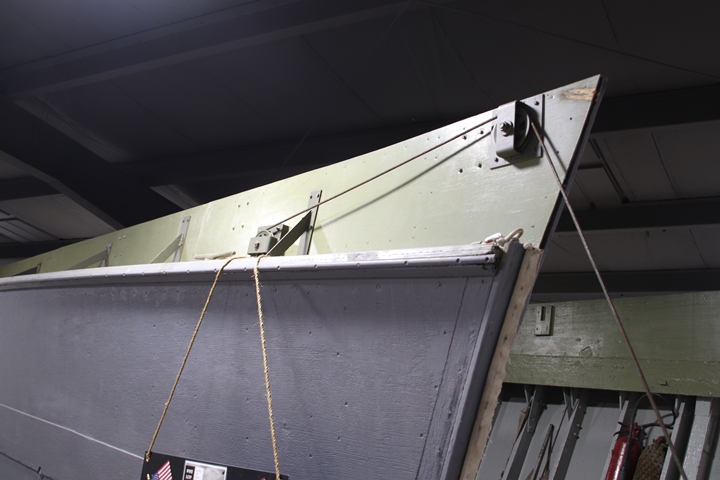
The starboard side ramp cable is routed
through two more sheaves before attaching to the ramp. Author's
photo added 12-24-2021.
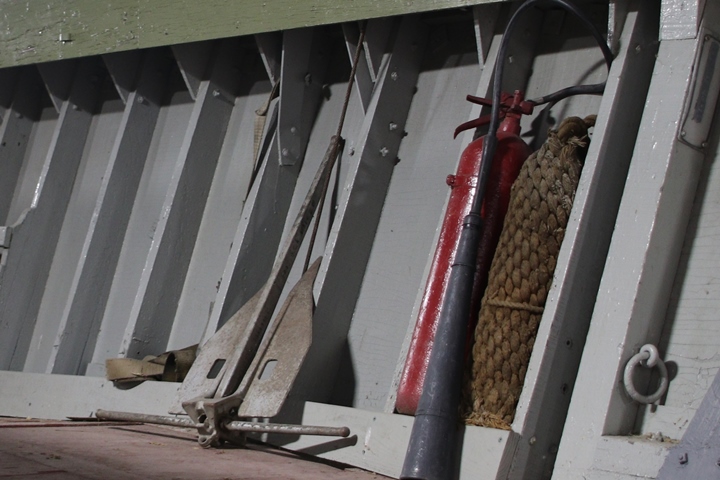
The ramp cable to the port side of the
landing craft runs through another sheave under the deck of the boat and
is then routed back up the inside of the craft to the outside. It
can be seen near the anchor. On the outside of the LCVP, it is
routed through two more sheaves like the starboard side of the craft.
Author's photo added 12-24-2021.
Owner: Roberts Armory
Location: Rochelle, IL
Hull Number: C-32238
Year Built: February- April 1943
Date of Photos: 2015
Comments: This is a Higgins-built boat that was recovered from
California, where it was used as a utility boat on the Los Angeles City
reservoirs. The historical record indicates that this boat was
shipped from the Higgins factory to Camp Pendleton to use for training.
This allowed it to survive the war and then be purchased as surplus by
the City of Los Angeles.
The boat is operated on a small lake next to
Roberts Armory.
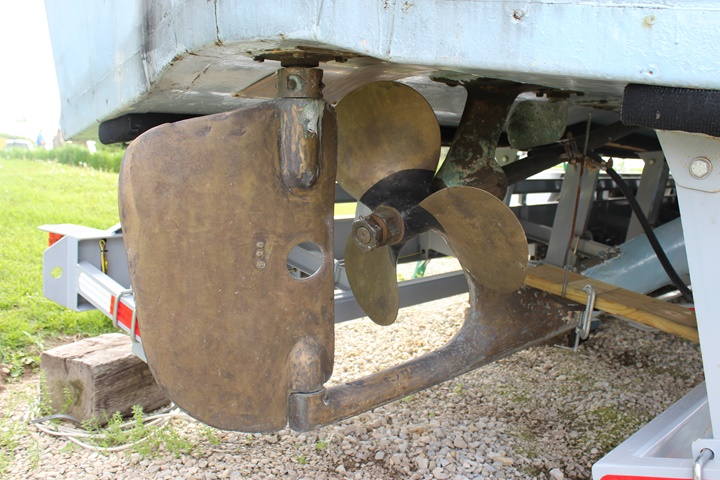
This photo shows the World War Two era solid one-piece
brass casting that connects the hull, skeg, and rudder. This
differs from the one shown for the boat above, which was a two-piece
version of this. Author's photo.
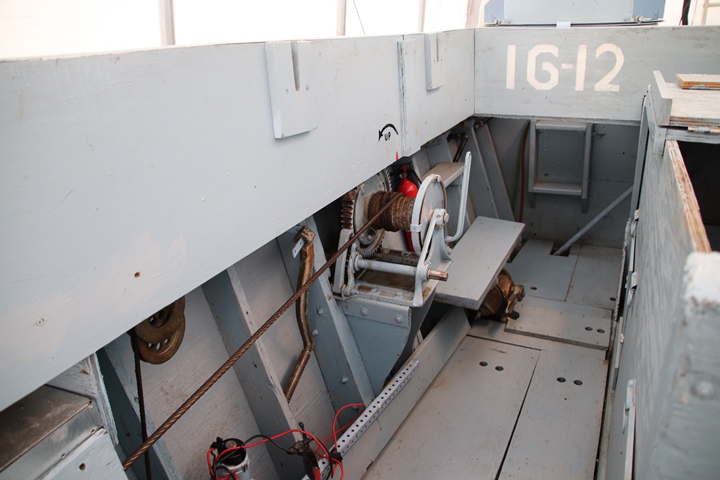
This shows the location of the winch in a
World War Two LCVP. Author's photo added 12-24-2021.
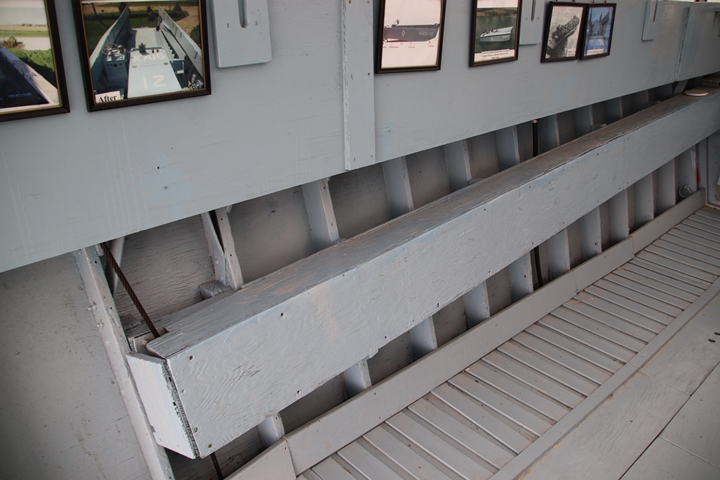
This LCVP has the normal wood covering over
the cable and winch mechanism in the troop compartment. This
prevented the soldiers or their equipment from fouling the mechanism.
Author's photo added 12-24-2021.
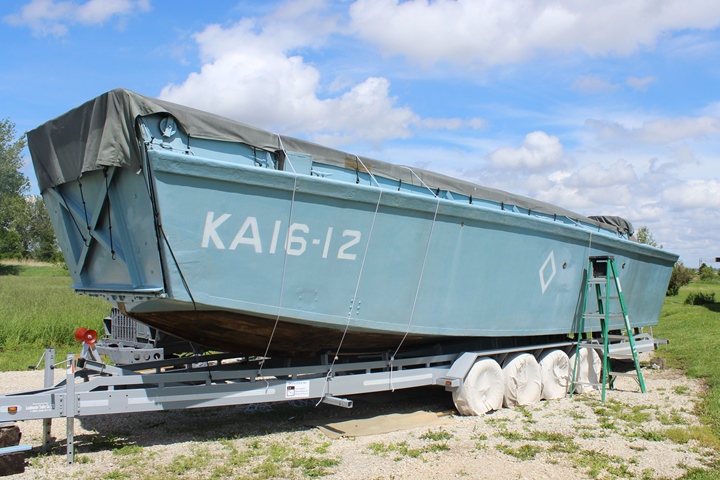
Author's photo.
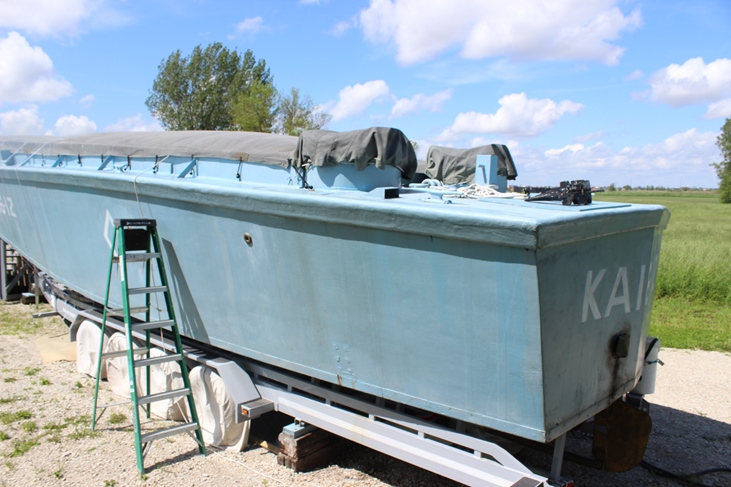
Author's photo.
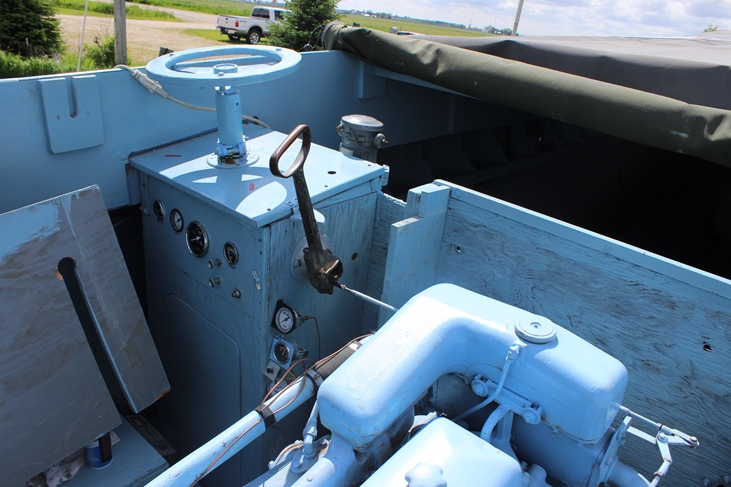
The coxswain's position has a combination
throttle-forward/reverse control on the lever shown. Moving the
lever towards the front of the boat is forward, and to the rear is
reverse. Speed of the engine is controlled by twisting the handle.
Note the rod extending from the base of the throttle lever in front of
the engine to the linkage that connects to the throttle on the engine.
There are a couple of switches and gauges along with the rudder control.
Author's photo.
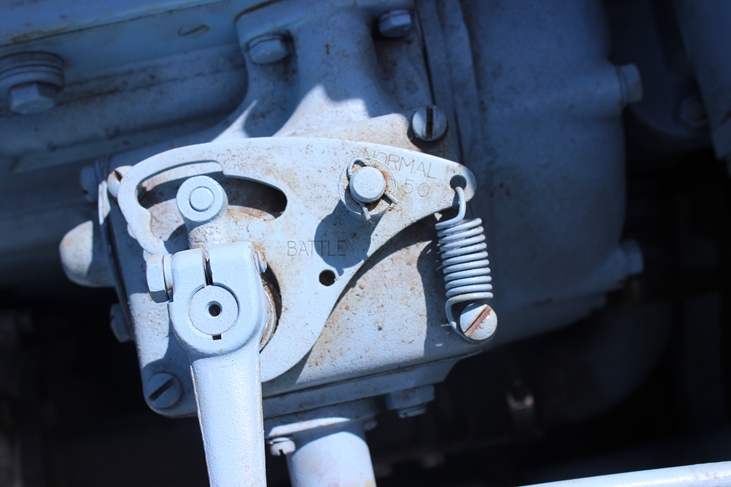
The throttle connection on the engine has a
normal operational range and a position for battle speed. Author's
photo.
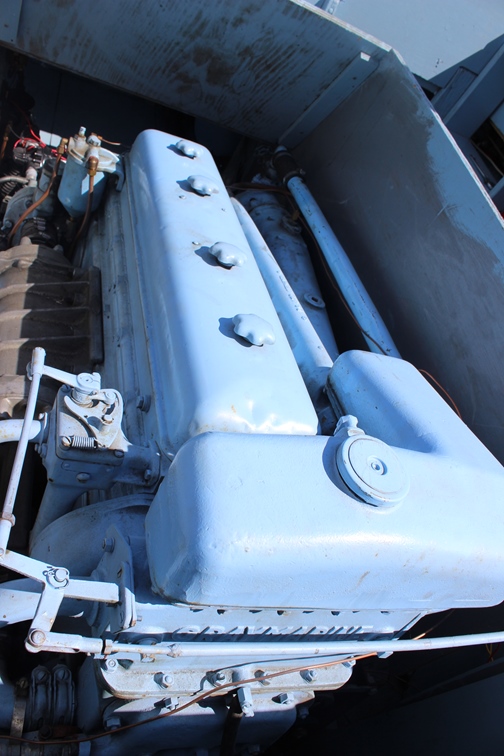
The LCVP has an original Gray/Detroit Diesel
engine in it. Gray Marine can be seen on the water-to-water heat
exchanger it added to the Detroit Diesel 6-71 for marine operation.
Author's photo
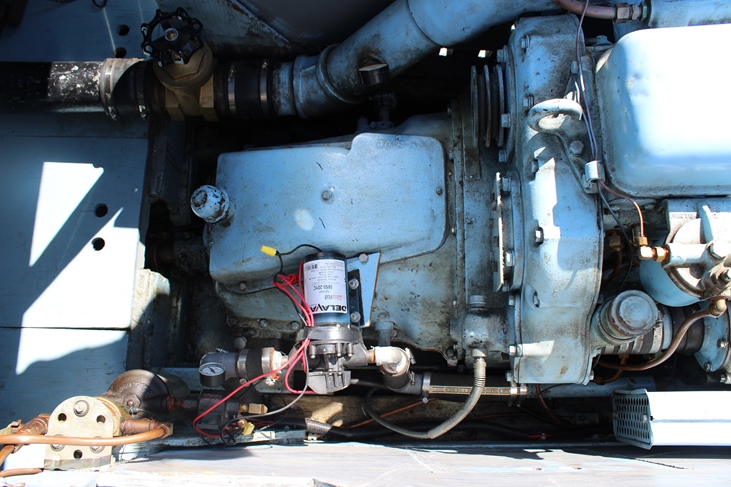
The exhaust that runs out to the back of the
boat is in the top of the photo. This is a running engine.
Charles C. Roberts, Jr. ran it for me the day I visited his museum.
He is also author of "The Boat that Won the War - An Illustrated History
of the Higgins LCVP." This is the only book that has been written
exclusively about the LCVP. Author's photo.
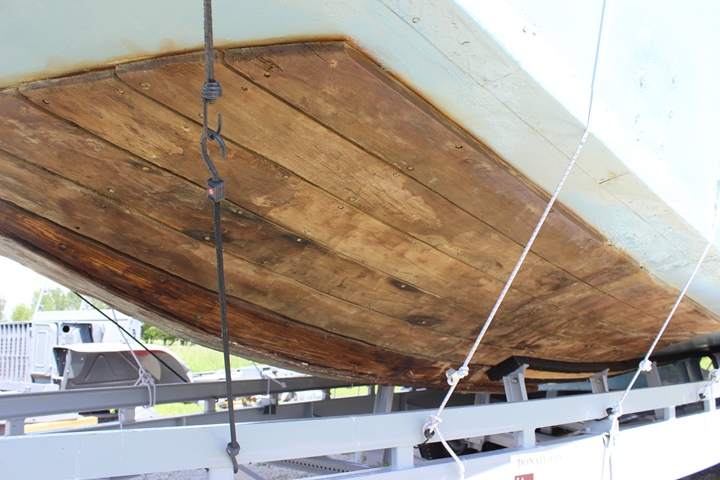
Author's photo.
Owner: Private Owner
Location: California
Delta
Hull Number: 72530
Year Built:
1942-1945
Date of Photos: Unknown
Comments: This is a World War Two LCVP that has been turned
into a house boat. It is operating in the California Delta. The
ramp was removed, and a flat bow was added to the boat. This craft
has a rounded transom which was built only by Higgins Industries during World War Two.
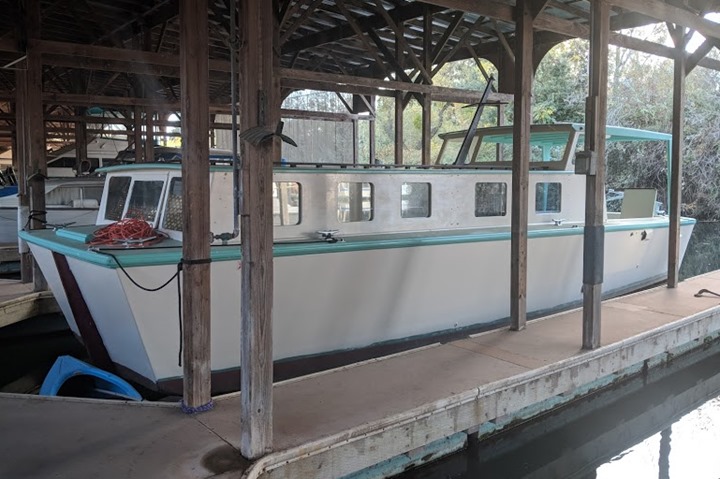
This view shows the port side and the bow of
the boat. Photo courtesy of the owner.
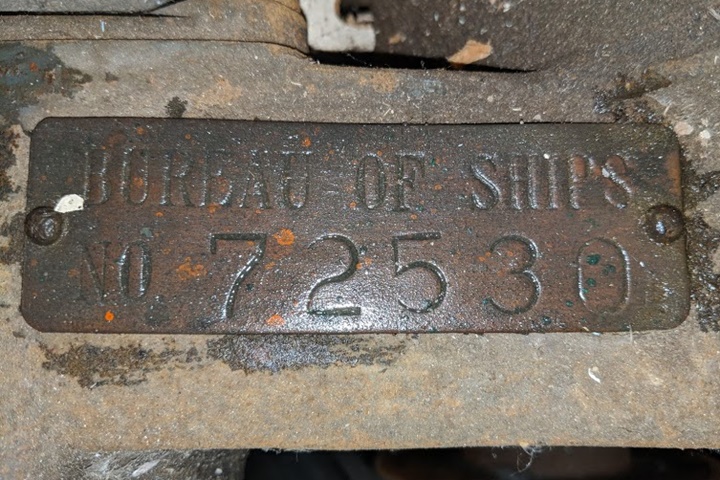
The hull number. Photo courtesy of the
owner.
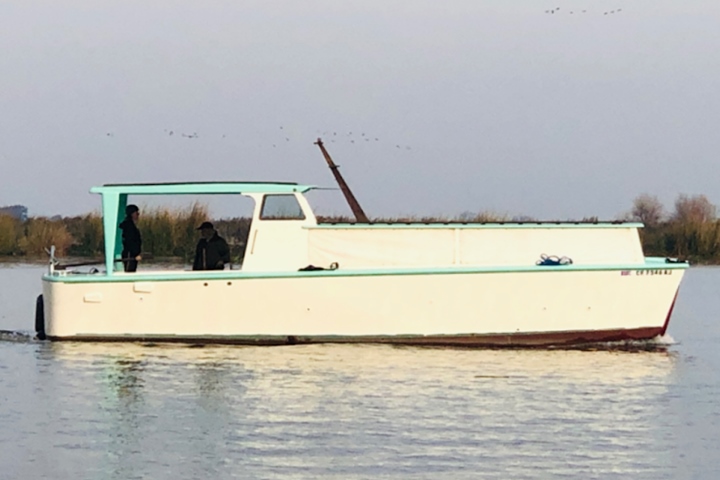
The steering has been modified to include a
tiller. Photo courtesy of the owner.
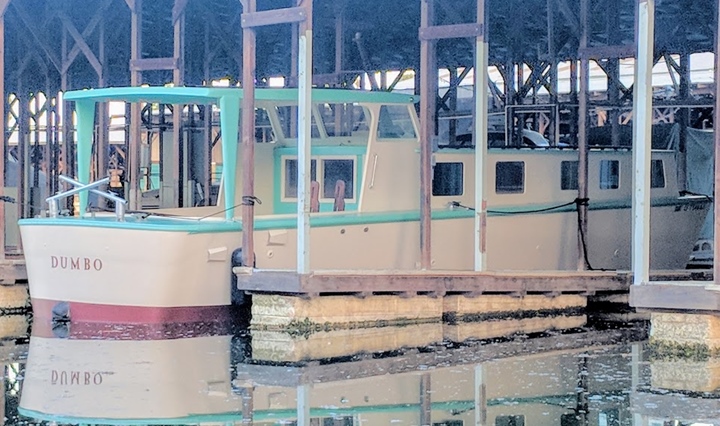
This photo shows the rounded transom.
Only Higgins Industries built a limited number of them. Photo courtesy of the
owner.
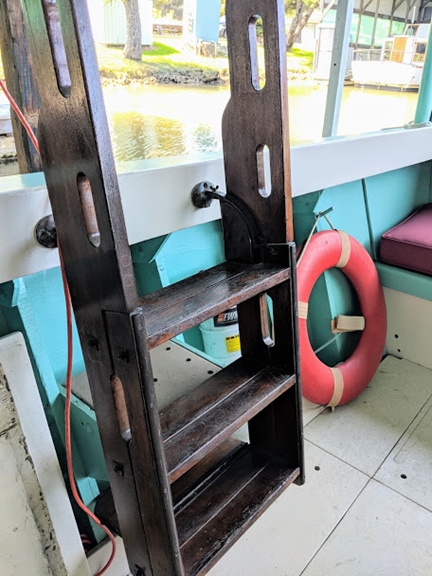
This interior view shows several of the ribs
used in the construction of the World War Two LCVPs. Photo
courtesy of the owner.
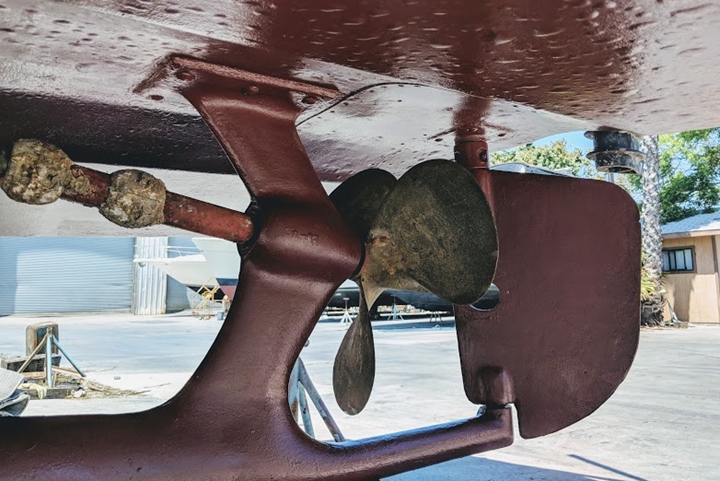
The boat has the World War Two type casting
to hold the propeller shaft and connect to the rudder. Photo
courtesy of the owner.
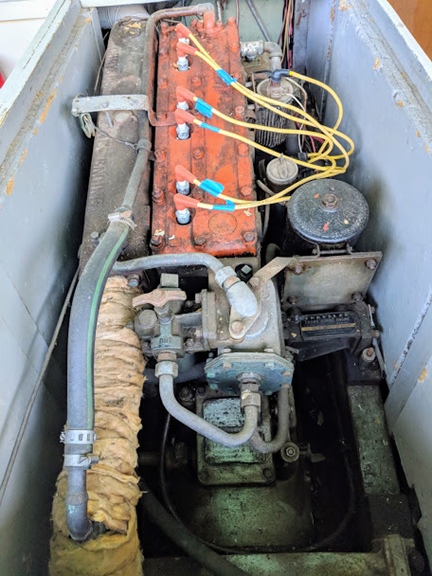
Photo courtesy of the owner.
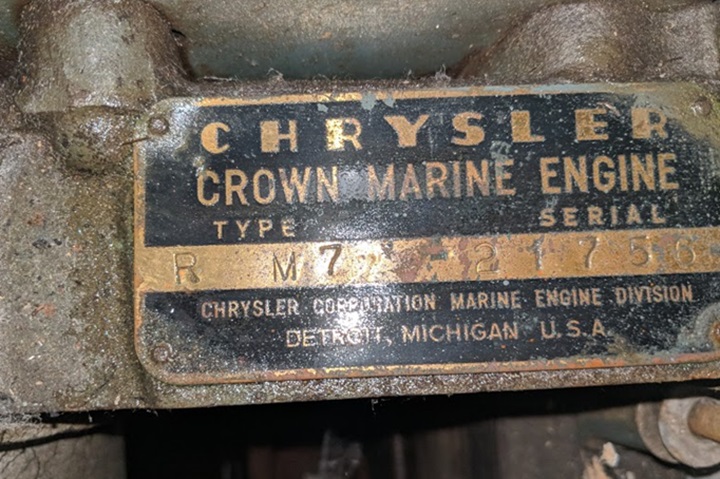
Photo courtesy of the owner.
Owner: American
Heritage Museum
Location: Hudson, MA
Hull Number: Unknown
Year Built:
1942-1945
Date of Photos: September 2015 and June 2019
Comments: The first group of photos below were taken in September 2015, when the LCVP
was owned by the 1st Division Museum in Wheaton, IL. In 2017, it
went to the American Heritage Museum in trade for an operational
M4A3(105) HVSS Sherman tank. In June 2019, I was able to visit the American Heritage
Museum. The second group of photos is from that trip.
This LCVP is different from all of the others
I have personally seen, or seen in books, or on the internet.
The difference is that the outer hull is covered with narrow wooden
planking
rather than with wider plywood planking, which is how they were
originally built. In speaking with a First Division Museum
officer about this in 2019, I was told that it was like this because it
was built by Owens, and the company had extra planking left over from
its pre-war civilian boats. So, they used up the planking on the hulls of LCVPs. There are two
problems with this scenario. First, there were other
civilian boat builders such as Chris-Craft, Richardson, and Matthews
who could have done the same thing. Second, Higgins
Industries furnished engineering documents to the six other boat makers
who would have specified plywood. The different boat makers
would have been required to use what was specified on the prints and not
substitute materials. Government inspectors at the plants would
not have accepted the boats unless they were to print.
It is my belief that boat restoration company
in North Carolina substituted the narrow planking instead of using wide plywood
planking.
In looking at their website, the company is more familiar with small
boats with planked wood hulls and does excellent restorations.
Otherwise, this LCVP has the attributes of a
World War Two LCVP.
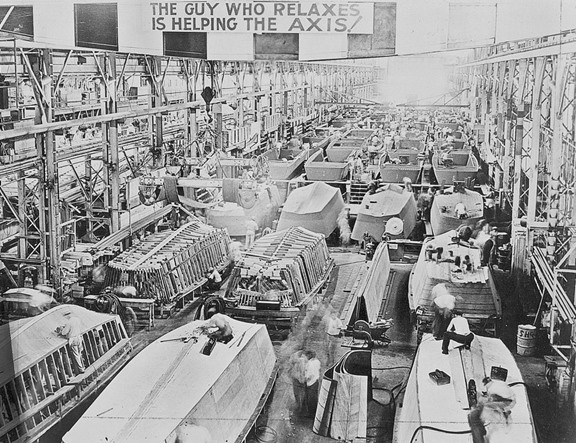
This photo of the Higgins Industries' plant
shows the length and width of the plywood planking.
2015 First Division Museum Restoration Shop Photos:
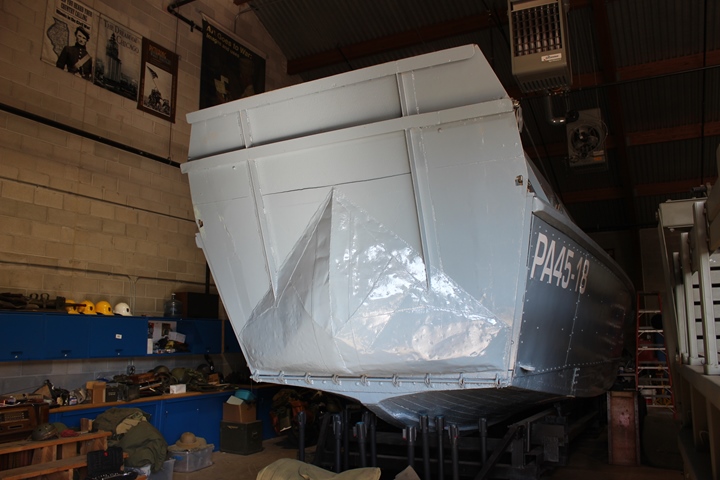
The museum kept the LCVP stored in its
restoration area. I was able to gain access to the area thanks to
the curator. This is a World War Two ramp with the triangular
bulge at the bottom. This type of ramp was used by several
companies during World War Two in the construction of the LCVP ramps. Author's photo.
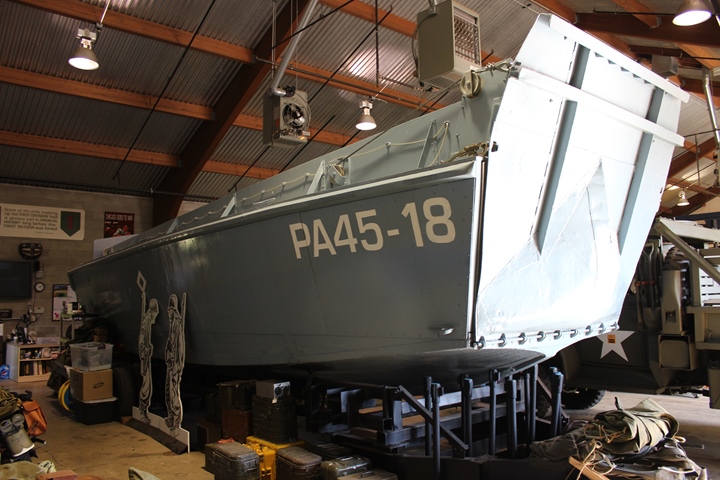
This has the World War Two type hoisting
cable that finishes its routing on the outside of the boat and then
connects to the ramp. Author's photo.
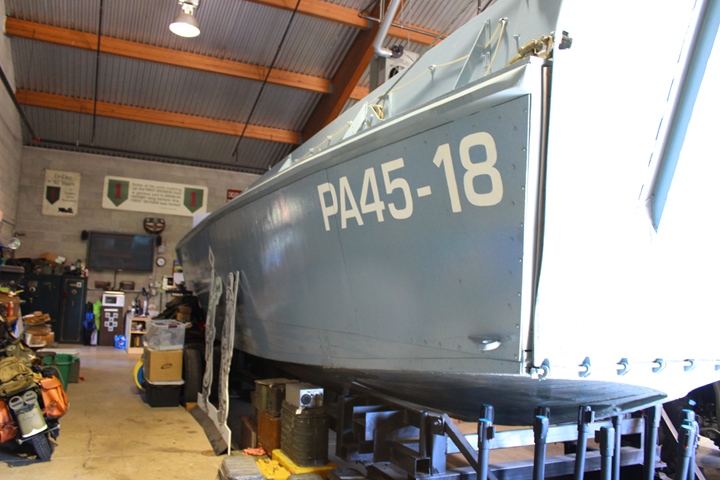
For the most part, the wood planking is
covered up by the 1/4-inch armor plate. Author's photo.
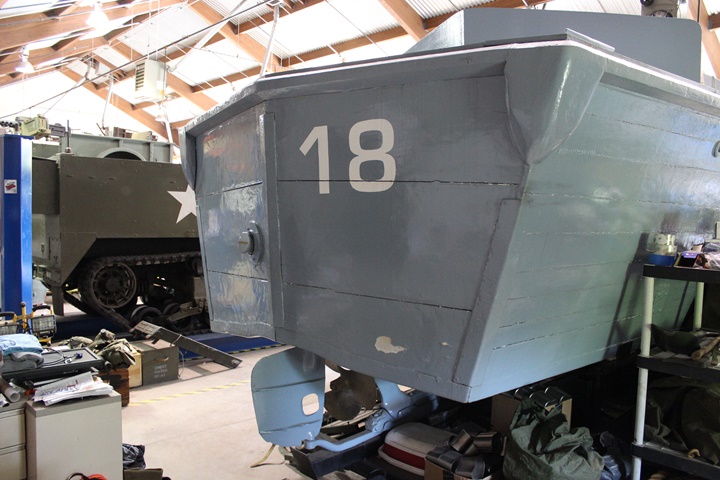
It isn't until one gets around to the rear
of the boat that the narrow planking becomes obvious. Author's photo.
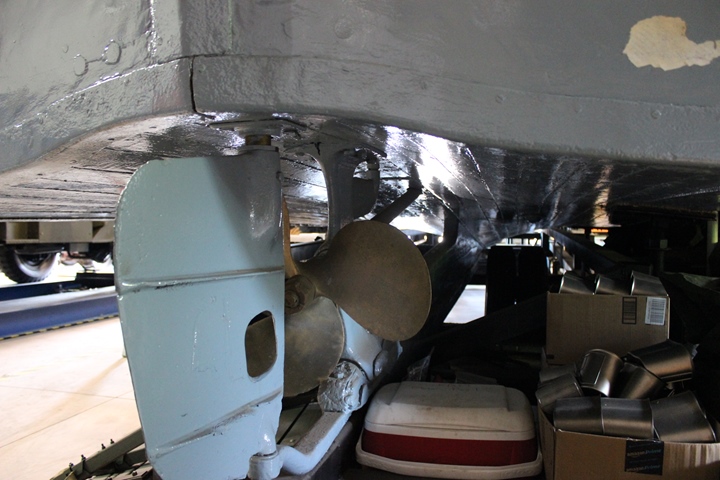
This LCVP has the World War Two era propeller
and rudder mounting casting. Author's photo.
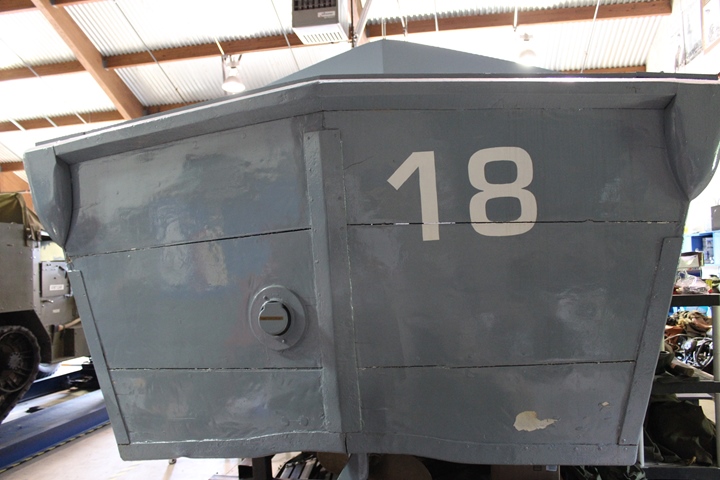
This also has a cover on the exhaust to keep
water out when not in use. This is the only one I have seen like
this. Author's photo.
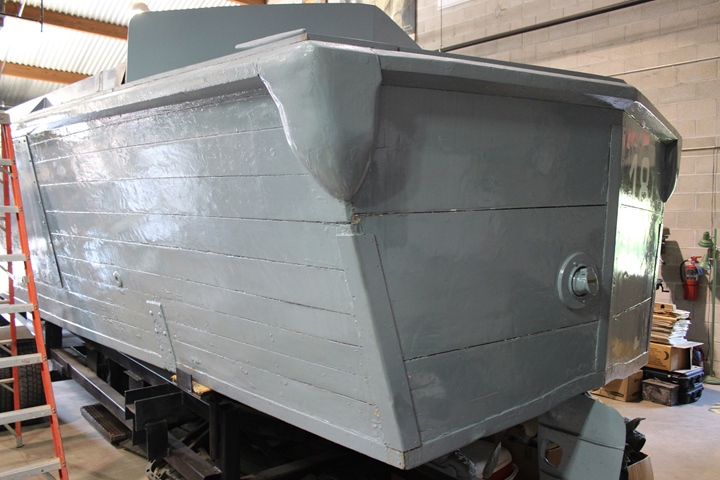
LCVPs had an inner layer of plywood planking
which had a marine glue applied, then a layer of No.12 Duck canvas applied,
and then an outer layer of plywood. The canvas made for a water
tight boat at all times and is not like other wooden boats of the era
that needed to have their outer planking swell up to become watertight.
The LCVPs had to be watertight and combat ready when they were put into
the water from the transport ship. Author's photo.
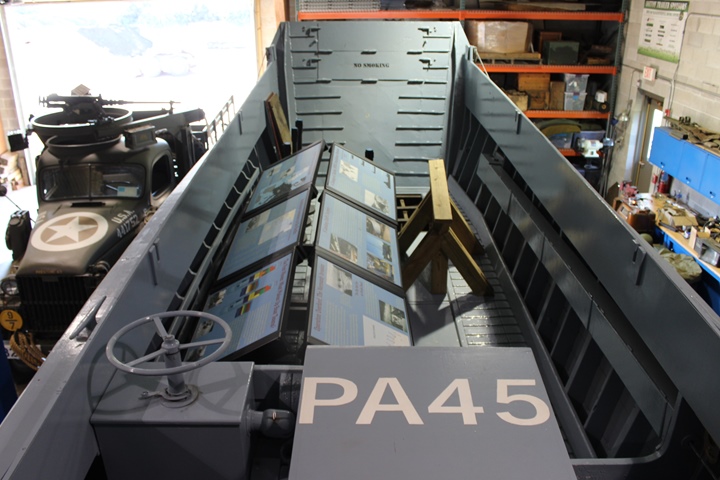
Author's photo.
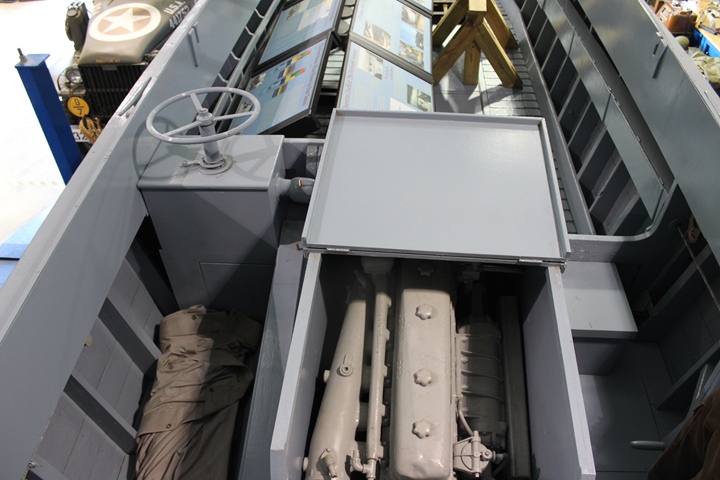
The combination throttle and transmission
lever is absent. The coxswain's station was not restored with
instruments and gauges. Author's photo.
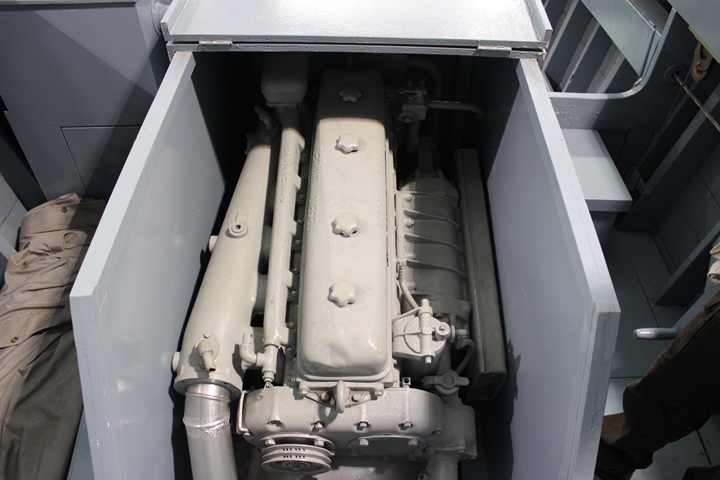
The original Gray 64N9/Detroit Diesel 6-71
has been replaced by a Detroit Diesel 6-71 engine. In the upper right
corner of the photo, the ramp cable can be seen as it goes through a rib
and then into the ramp cable extension and retention box. Author's photo.
2019 American Heritage Museum Photos:
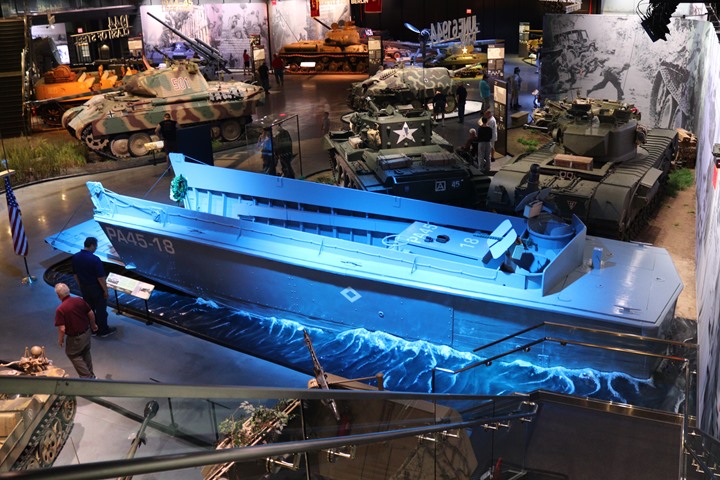
The entrance to the museum is actually a
floor above the display area. The LCVP is the first display that a
visitor sees. Author's photo.
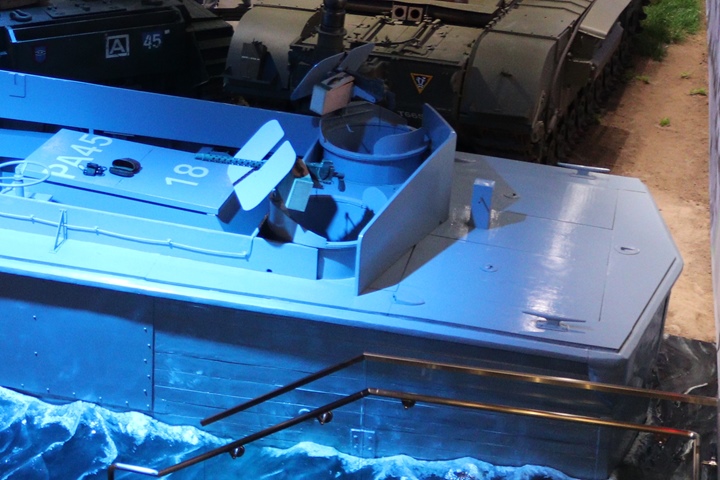
Author's photo.
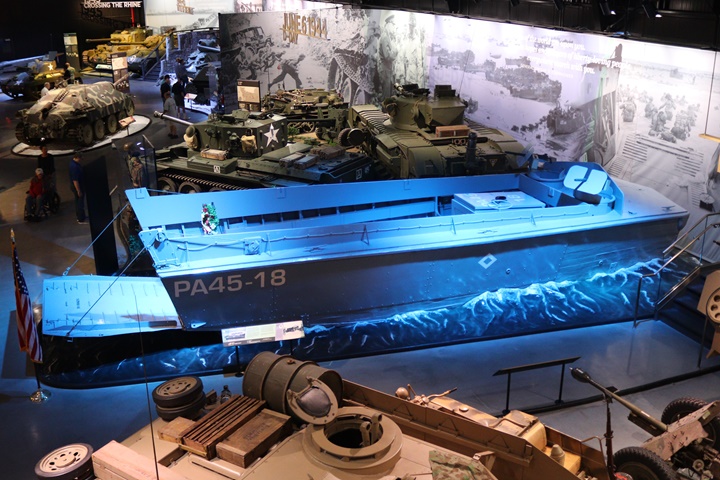
Author's photo.
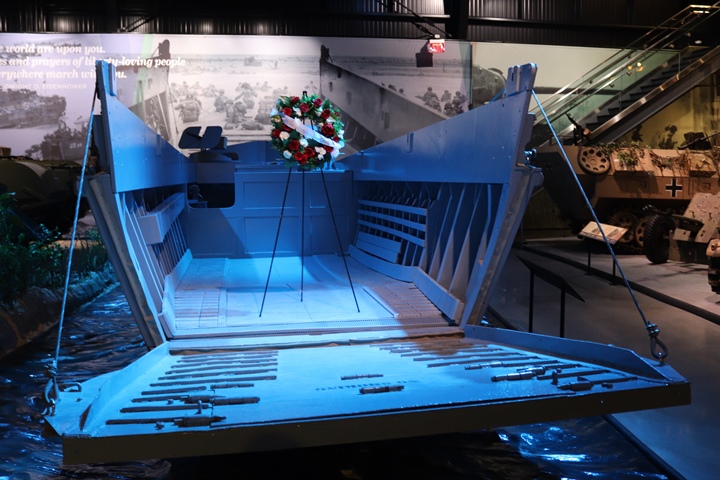
This view into the boat shows the ribbing
along the inside of each hull. The starboard side (Left side in
the photo.) has a long covered box running most of its length.
This is what I called the ramp cable extension and retention box in the
last photo above in the First Infantry Museum photos. Author's photo.
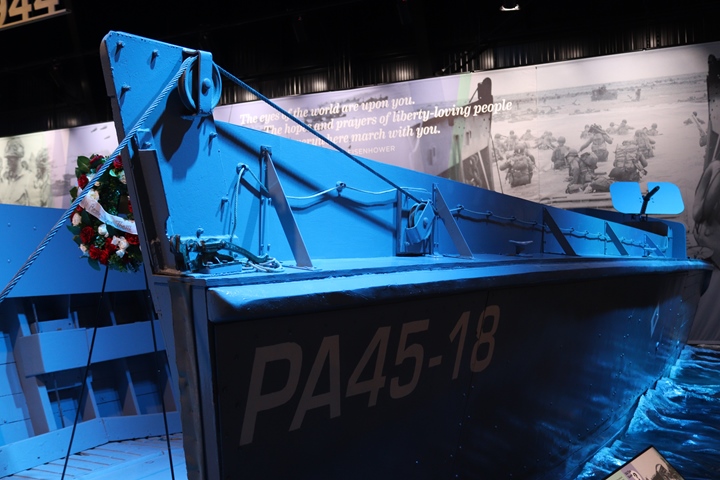
Looking at the lower left-hand corner of
this photo, a cable can be seen running out of both the top and bottom of
the ramp cable extension and retention box. The bottom cable runs
under the deck of the boat, back up the port side coming out through a
hole in the side of the hull just above the number "5," and then
attaches to the ramp via two sheaves. The cable coming out the top
goes up through the side of the hull and then to the ramp via two
sheaves. There is also a fiber rope running along the length of
the LCVP. This is the rope that disengages the ramp lock from the
ramp and lets it fall open under its own gravity. Author's photo.
This method of lowering and raising the ramp
was only used on World War Two LCVPs. After World War Two,
American-built LCVP cables ran outside the boat.
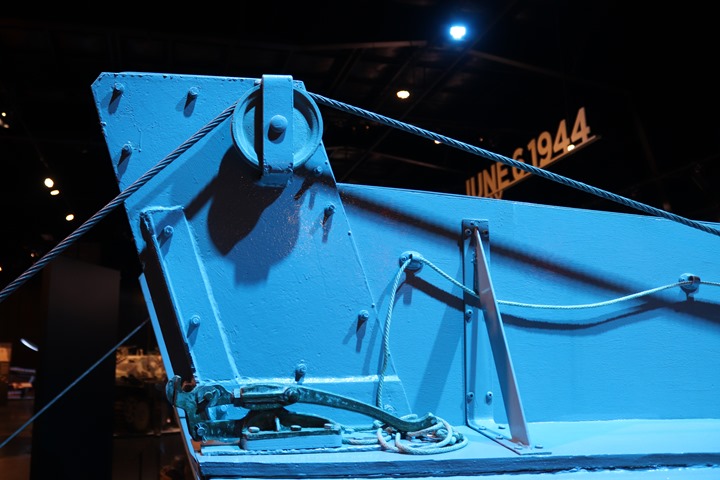
Author's photo.
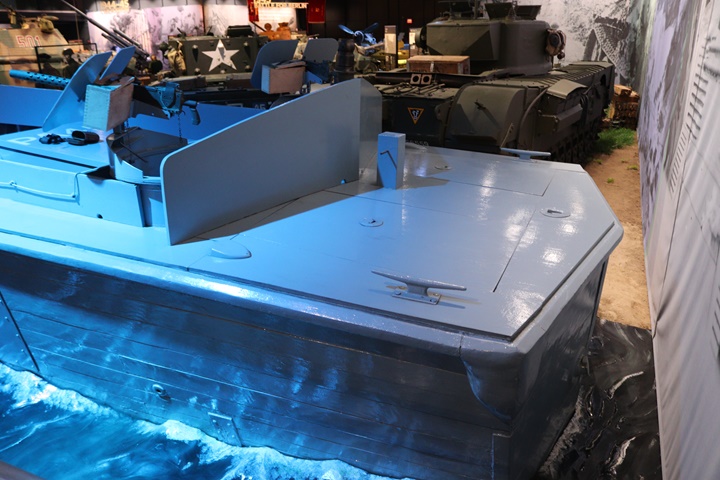
The ramp rope turns up and into the cockpit
of the boat. This photo gives a closer view of the transom and the
two hatches on it. The long wooden planking of this boat can also
be seen. Author's photo.
Owner: D-Day Museum
Location: Portsmouth, United Kingdom
Hull
Number: Unknown
Year Built: 1942-1945
Comments: The YouTube video below from the D-Day Museum below gives information on the
acquisition, restoration, and display of this LCVP. What is
interesting is that this LCVP has the kinked side like the LCVP at National Museum
of the U.S. Army and the replica at the National Museum of the WWII.
There appears to have been a small number of boats built during World War Two
with the kinked side. This may have been the original design,
which was then changed to the flat sides for ease of manufacture and the
attachment of the armor plate.
The photos below were taken by Mr. John Posusta in June 2024. They
confirm that this is a World War Two era LCVP.
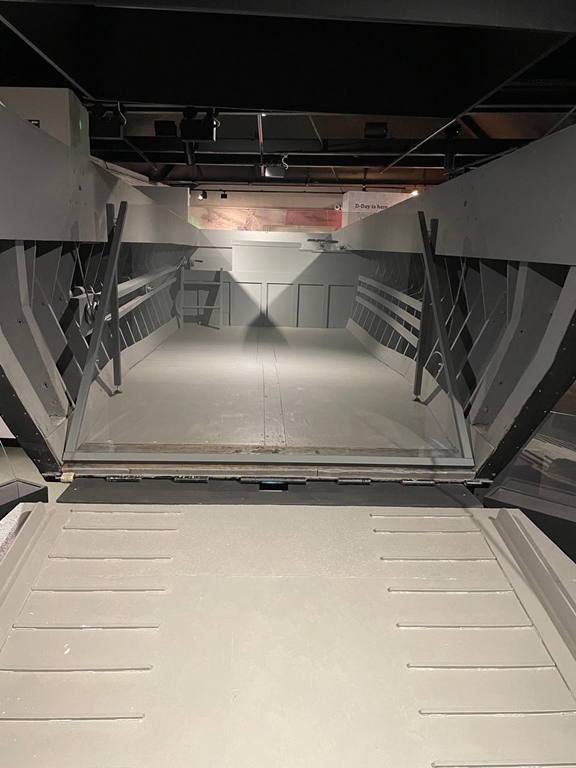
Image courtesy of John Posusta added
6-8-2024.
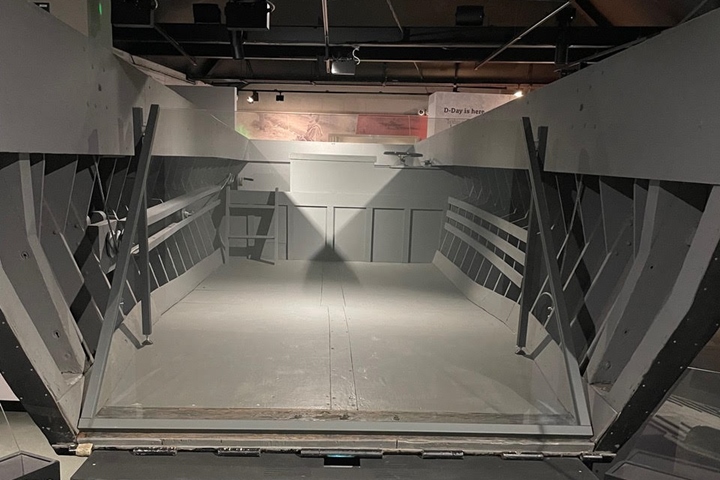
The ramp winch is in the correct position
and the cables run inside the boat. Image courtesy of John Posusta
added 6-8-2024.
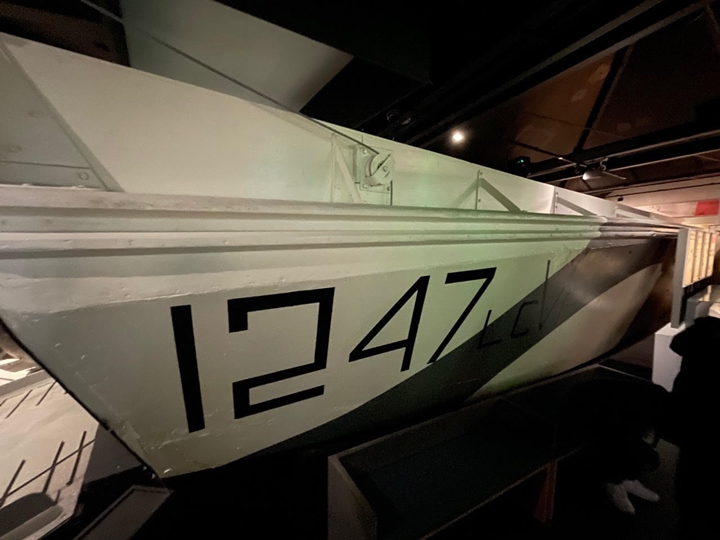
The ramp cable exit the LCVP at the correct position and then run
outside the last few feet before attaching to the ramp. Image
courtesy of John Posusta added 6-8-2024..
YouTube Video
Owner: Museum
of the U.S. Navy
Location: Washington, DC
Hull Number: Unknown
Year Built: 1942-1945
Comments: This LCVP is located in Cold War Gallery at the
museum. One source indicates that this boat was found in California.
Restoration work was done by the Naval Historical Detachment in Boston,
MA,
with many parts being provided by an LCVP that was found sunken in
Baltimore Harbor, MD.
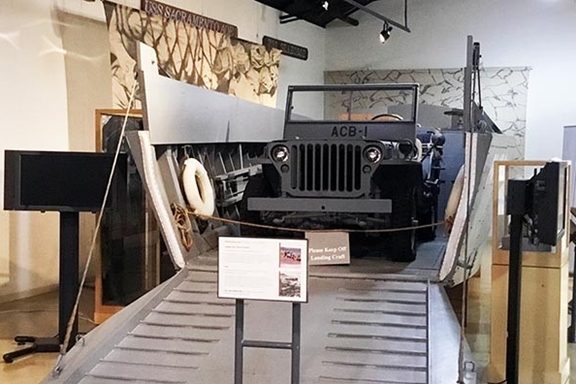
This boat has the proper cable system
for a World War Two era LCVP. Photo courtesy of the National Museum of
the U.S. Navy.
The following group of LCVP photos at the
National Museum of the U.S. Navy are courtesy of LCVP historian
Alejandro Raigorodsky. The photos were taken in 2005 by Mr.
Raigorodsky, who was able to visit the LCVP before it went on public
display. Note that the jeep has not yet been placed in the LCVP. It
should also be noted that this boat has an underwater exhaust port that
was used at cruise speeds. The Higgins and Chris-Craft LCVPs apparently
did not have these features. Although there is indirect evidence
supporting Mr. Raigorodsky's theory, his expertise and continuing
research indicates that this particular boat was most likely built after
February 1945 by one of the four small LCVP manufacturers; Horace E.
Dodge Boat and Plane Company, Matthews Company, Owens Yacht, or
Richardson Boat Company.
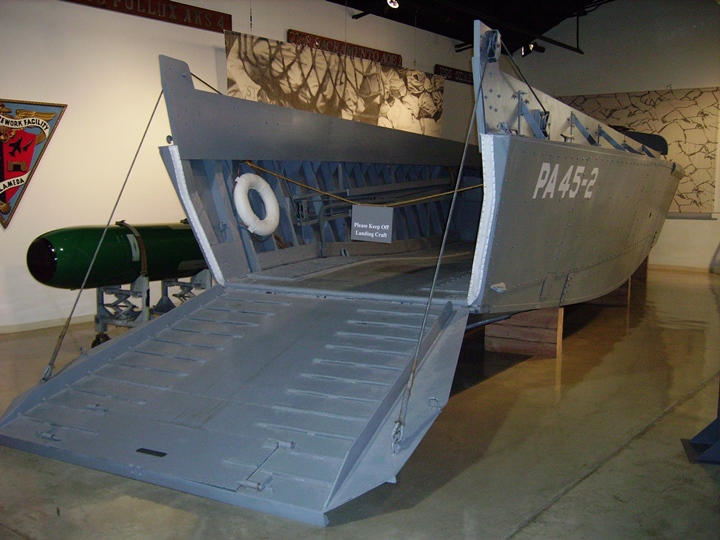
Photo courtesy of Alejandro Raigorodsky
added 3-25-2024.
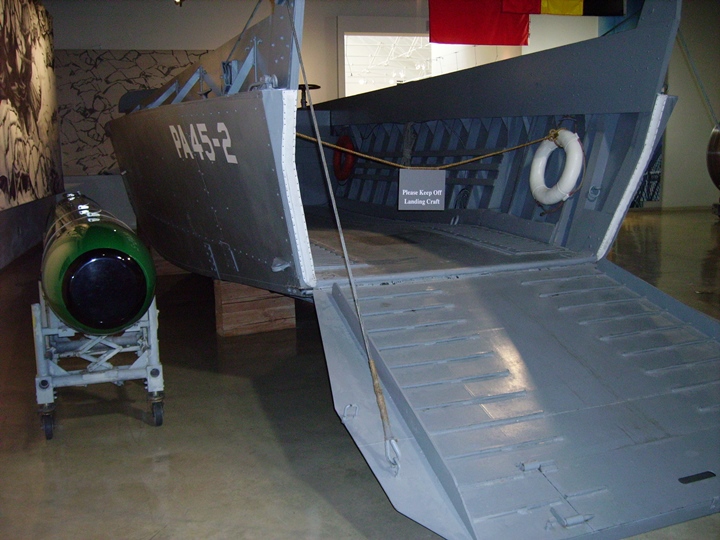
Photo courtesy of Alejandro Raigorodsky
added 3-25-2024.
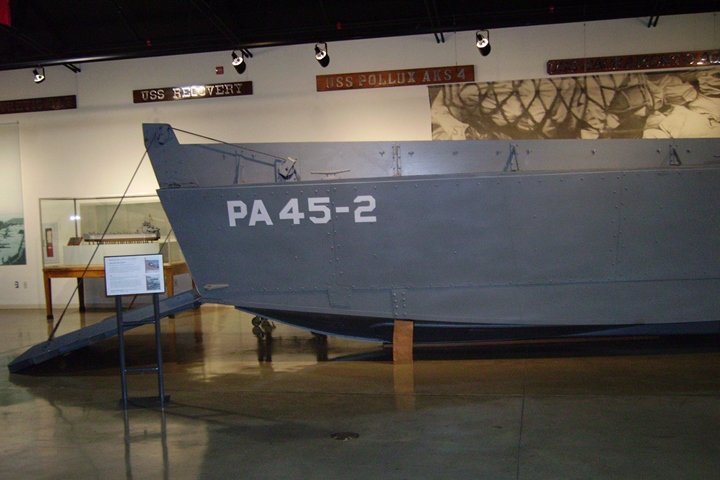
Photo courtesy of Alejandro Raigorodsky
added 3-25-2024.
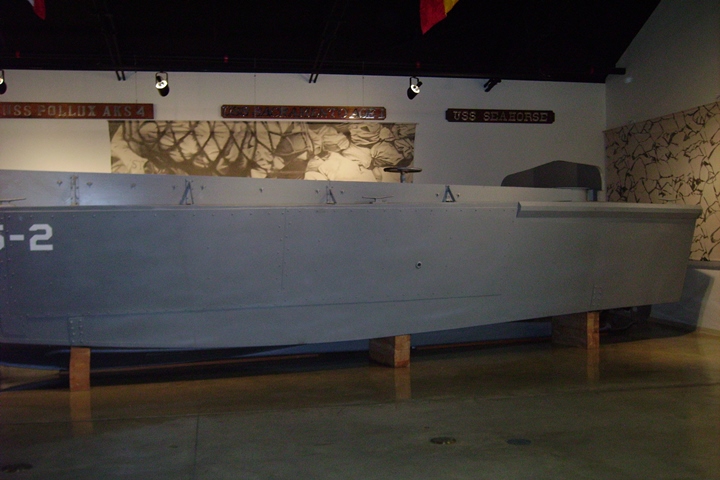
Photo courtesy of Alejandro Raigorodsky
added 3-25-2024.
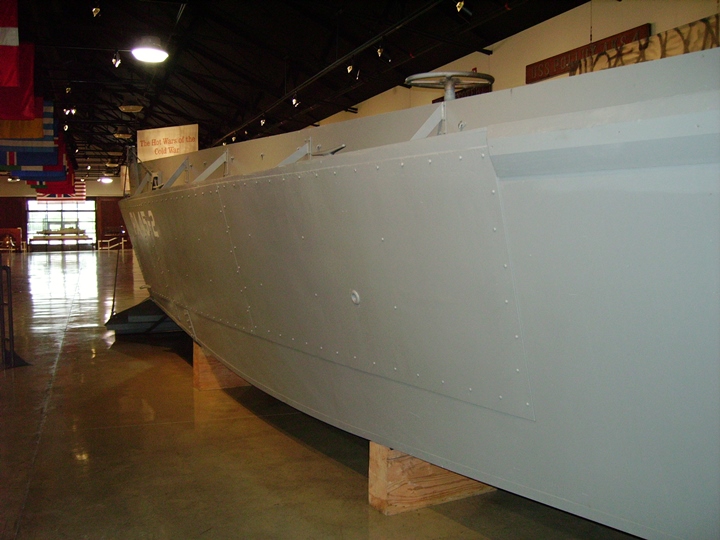
Photo courtesy of Alejandro Raigorodsky
added 3-25-2024.
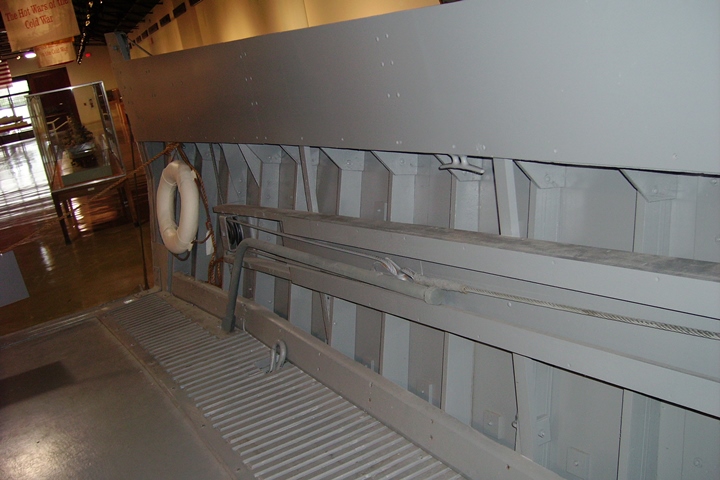
Photo courtesy of Alejandro Raigorodsky
added 3-25-2024.
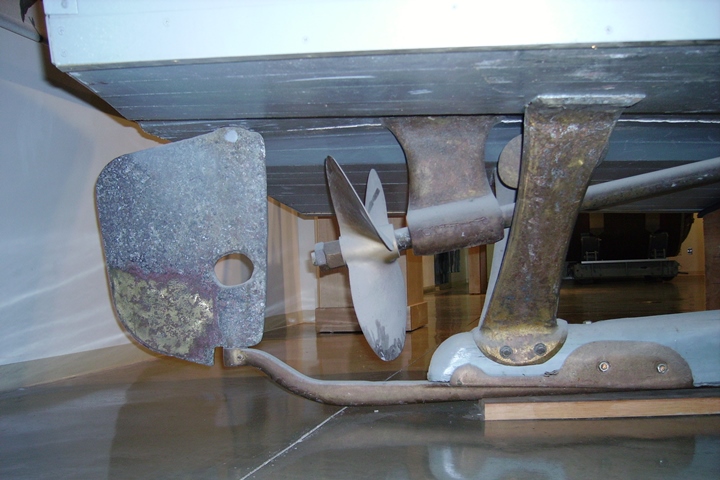
Photo courtesy of Alejandro Raigorodsky
added 3-25-2024.
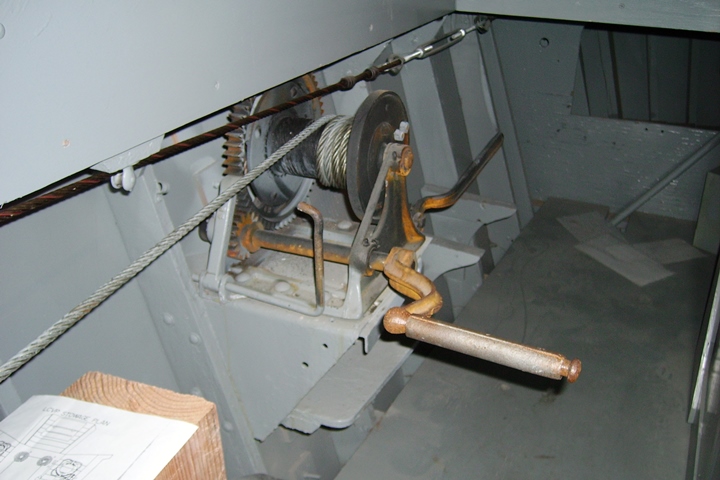
Photo courtesy of Alejandro Raigorodsky
added 3-25-2024.
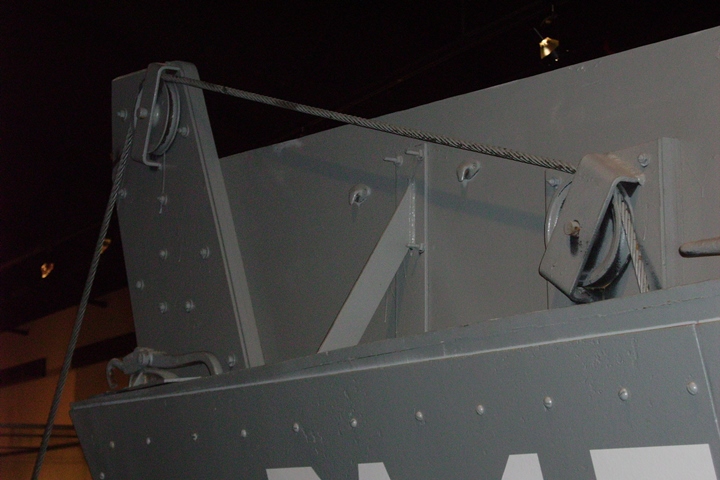
Photo courtesy of Alejandro Raigorodsky
added 3-25-2024.
Owner: Challenge LCVP - Higgins Boat
Location: Normandy France
Hull
Number: Unknown
Year Built: 1942-1945
Comments: This LCVP was found on a mudflat in Ster
Fanquec, France in 1996. In 2008 it was restored to operating
condition and currently particpates in reenactments along the Normandy coast
.
Challenge LCVP Facebook Page
|
































































































